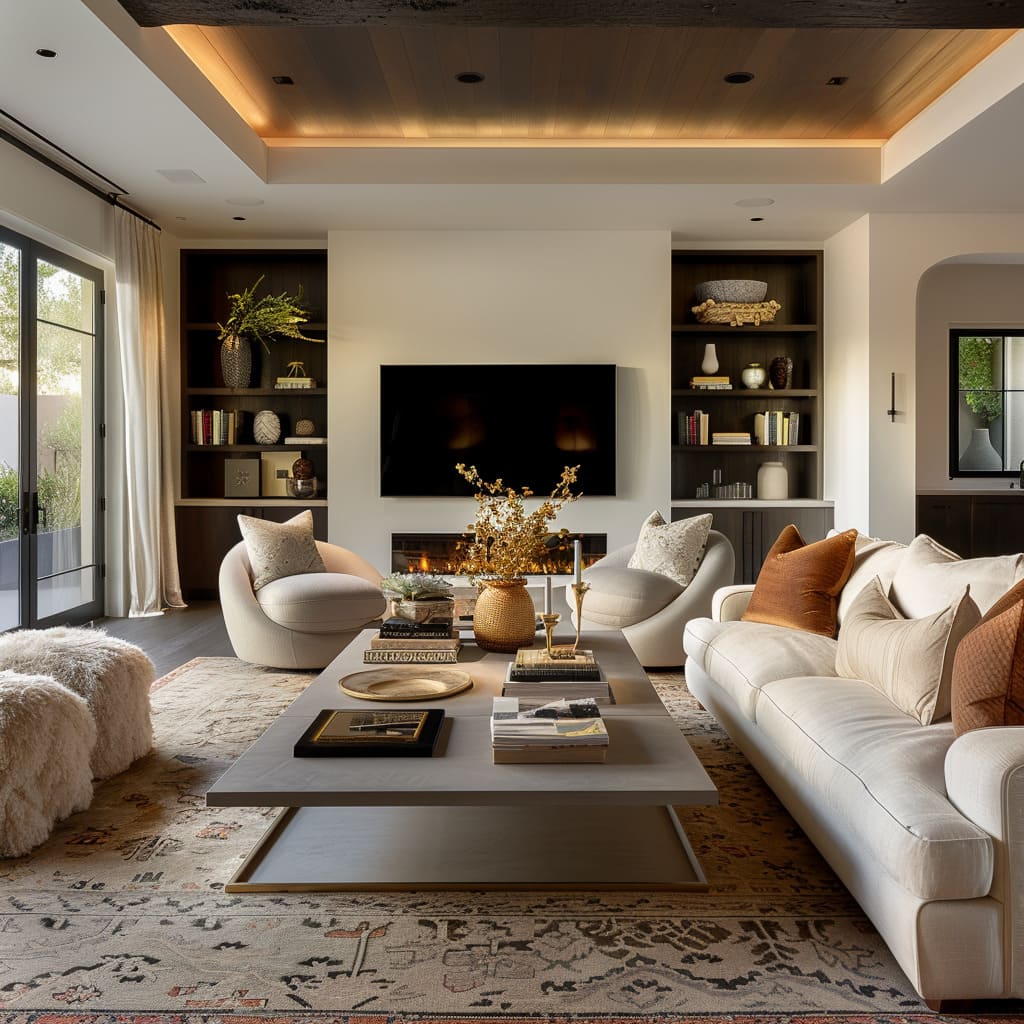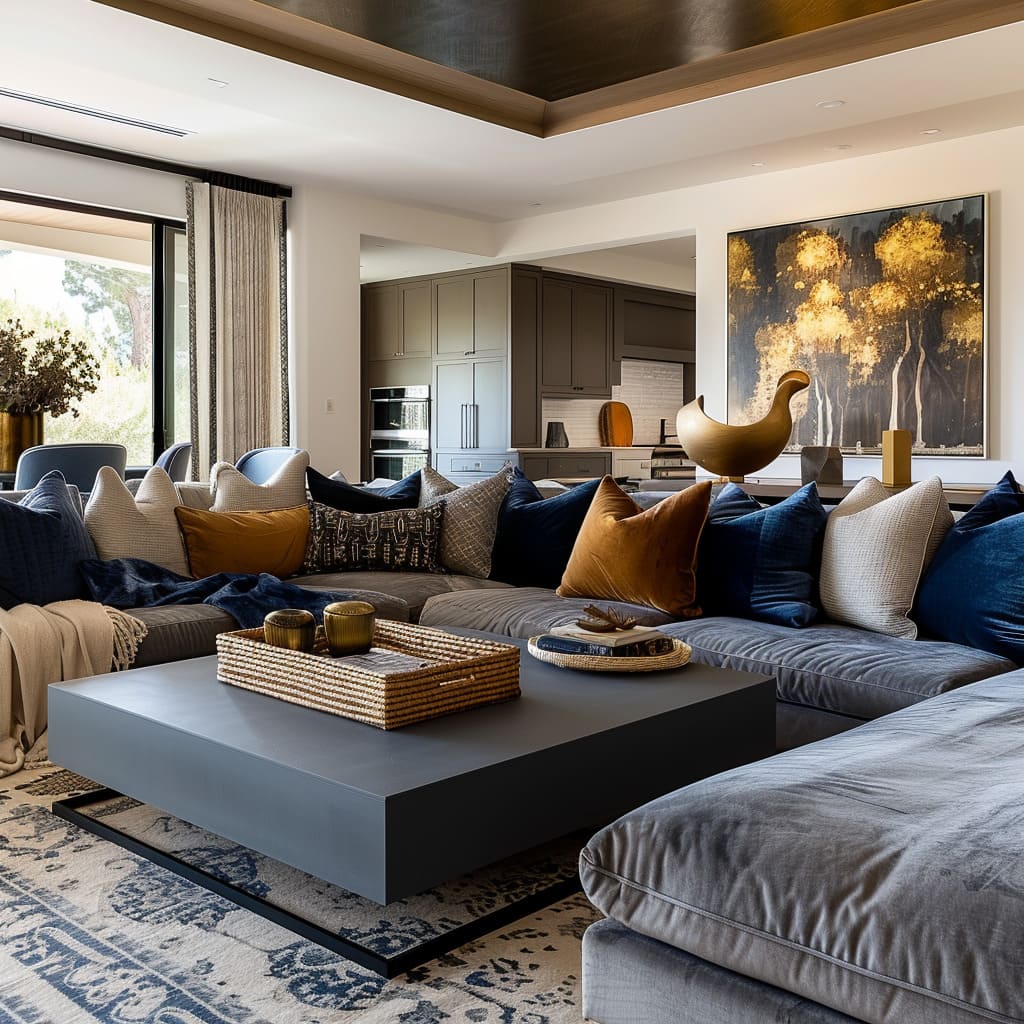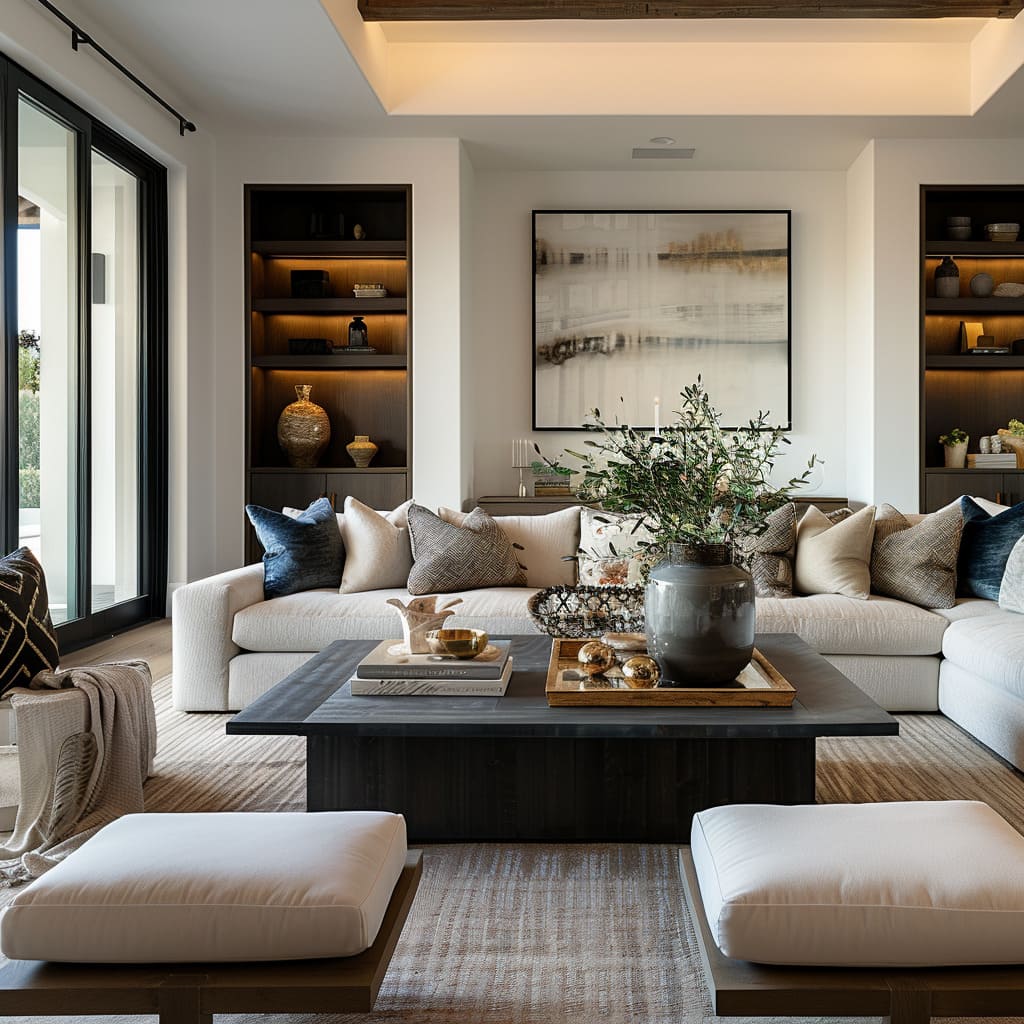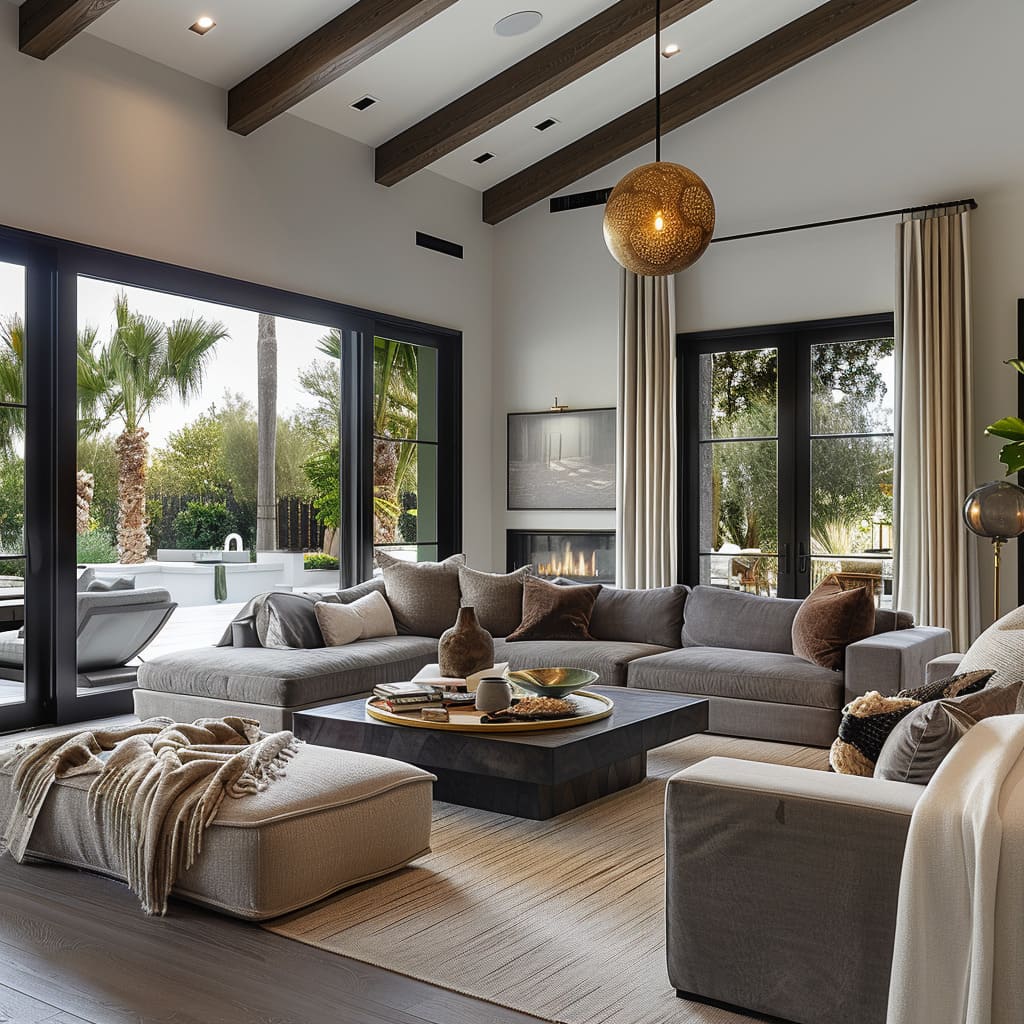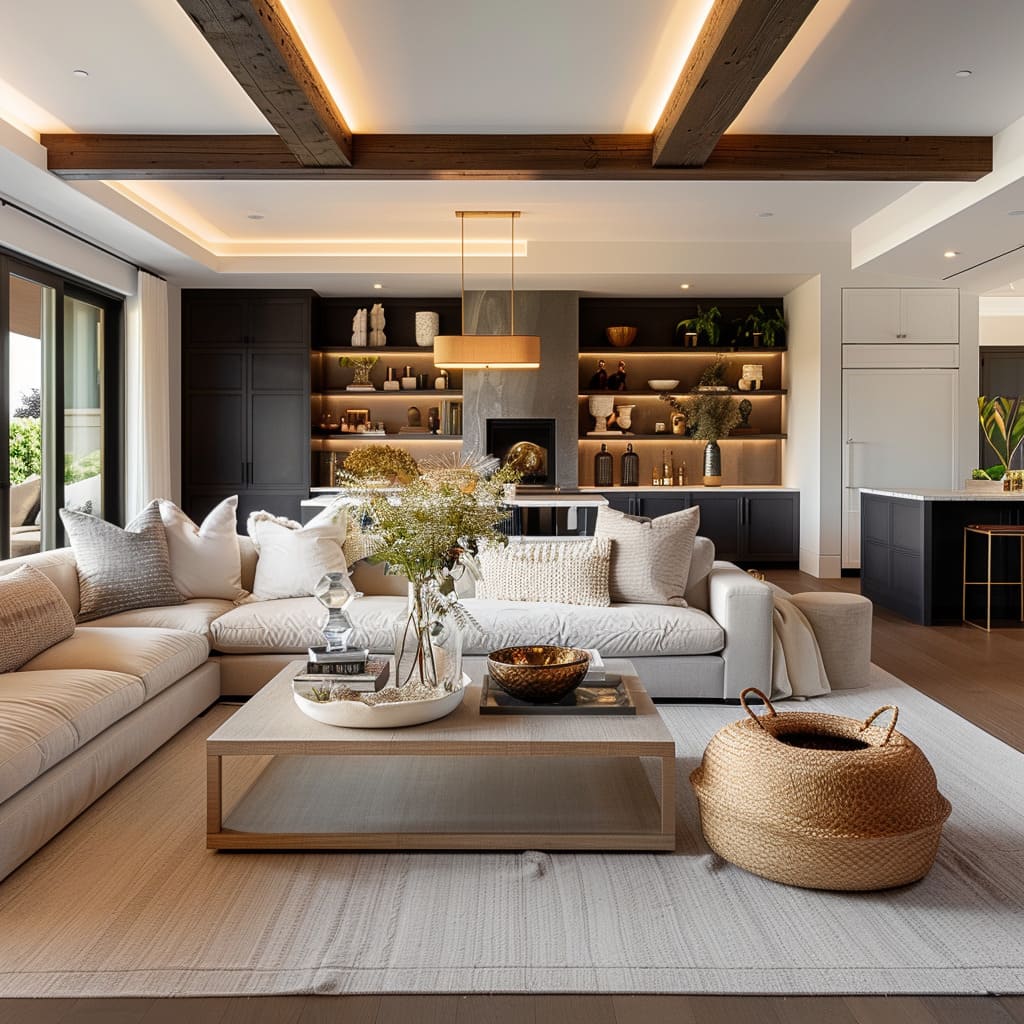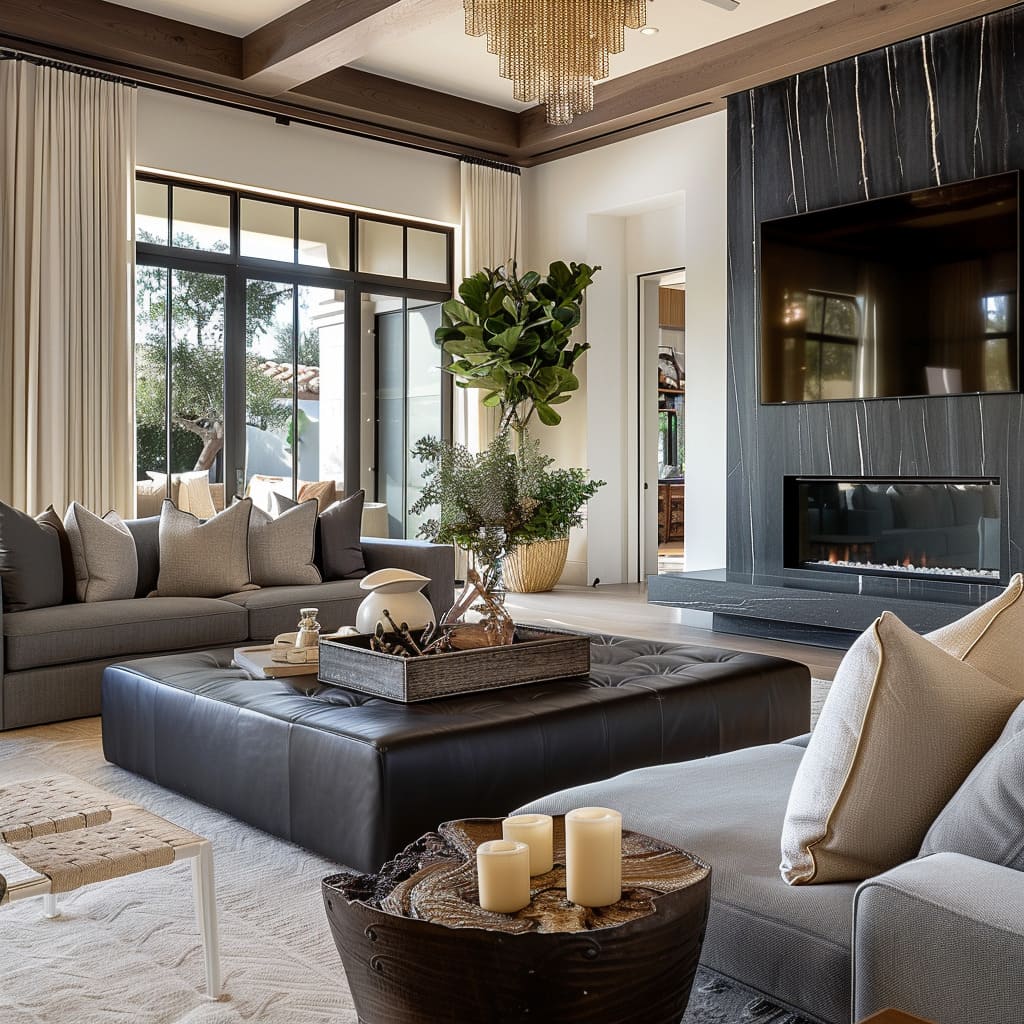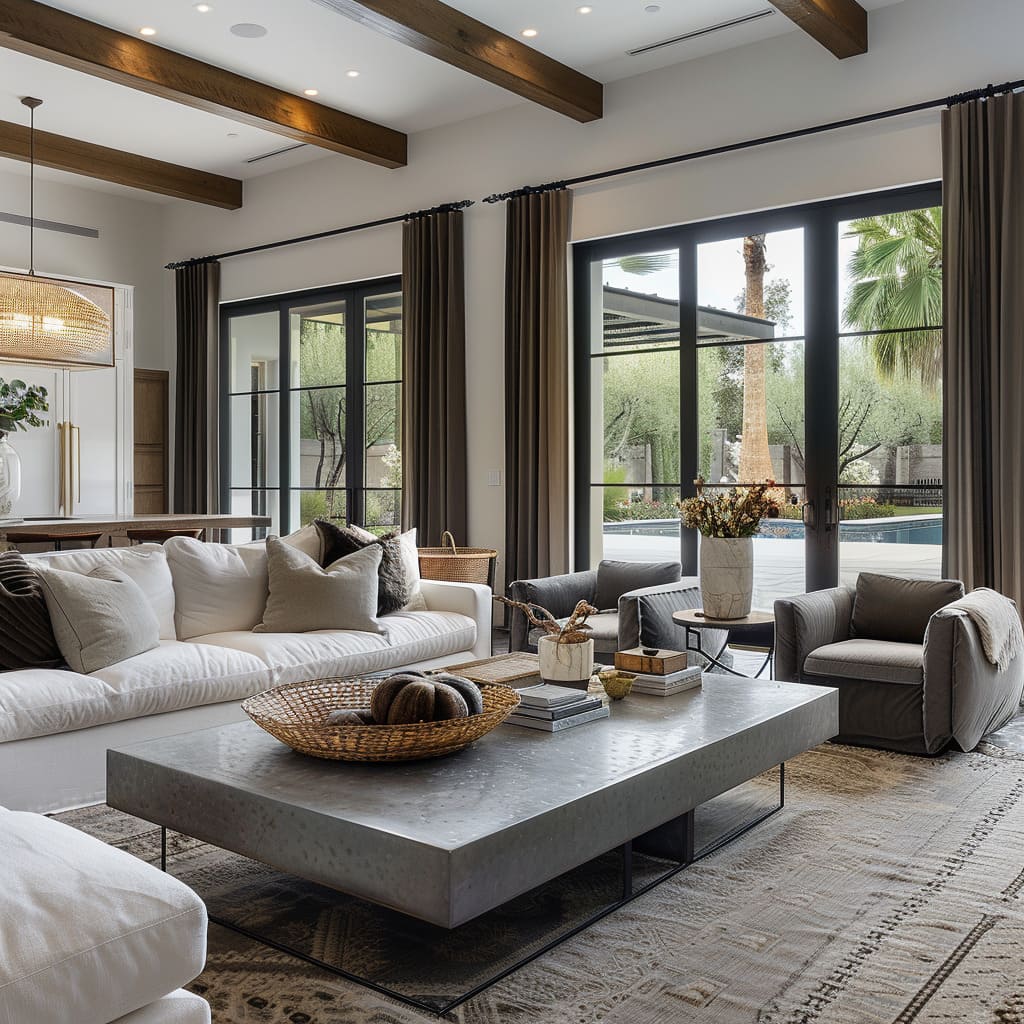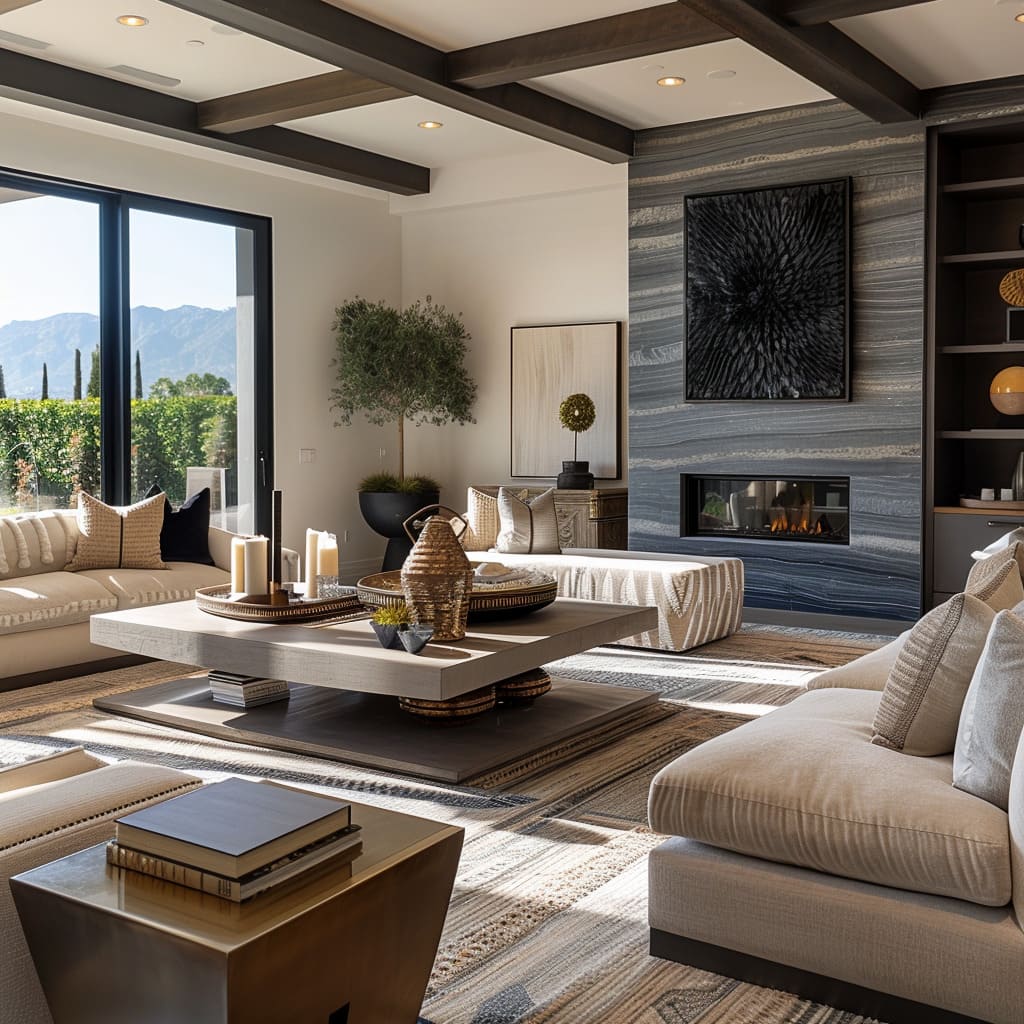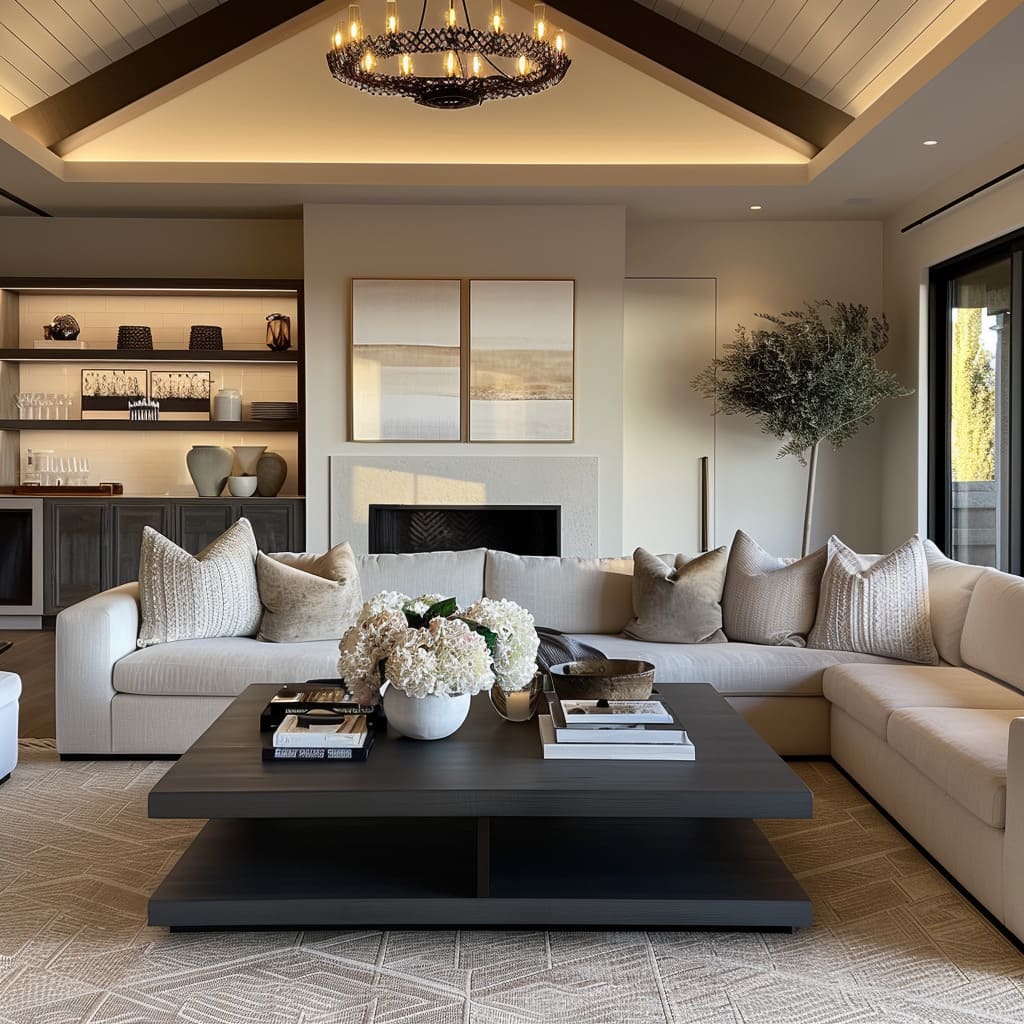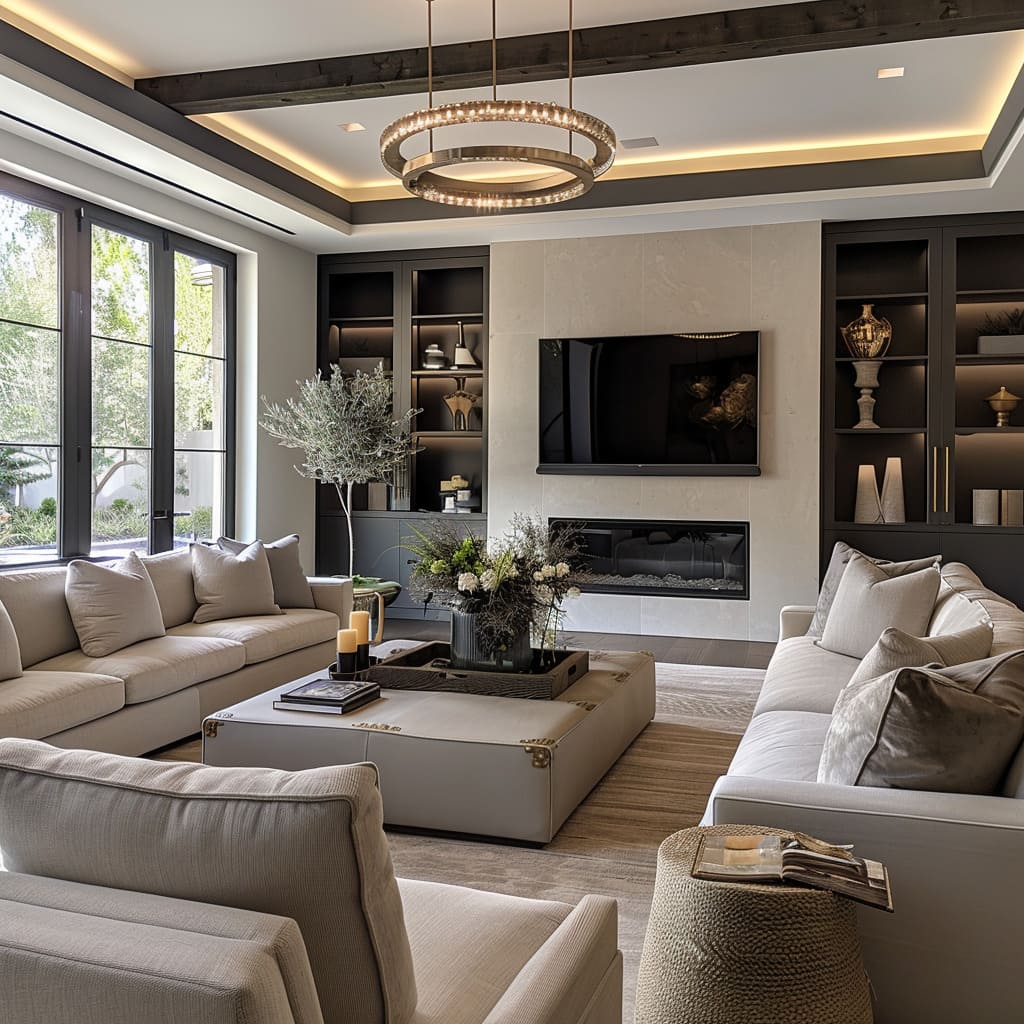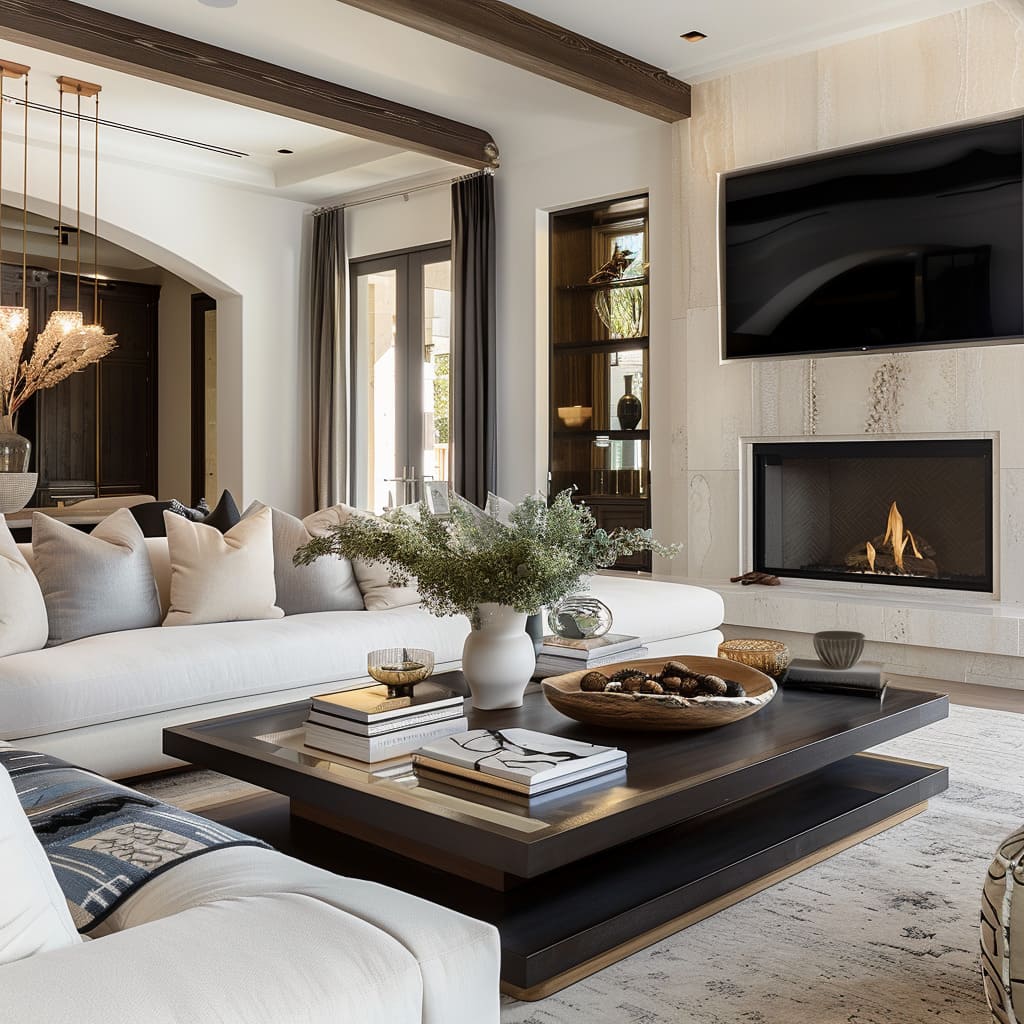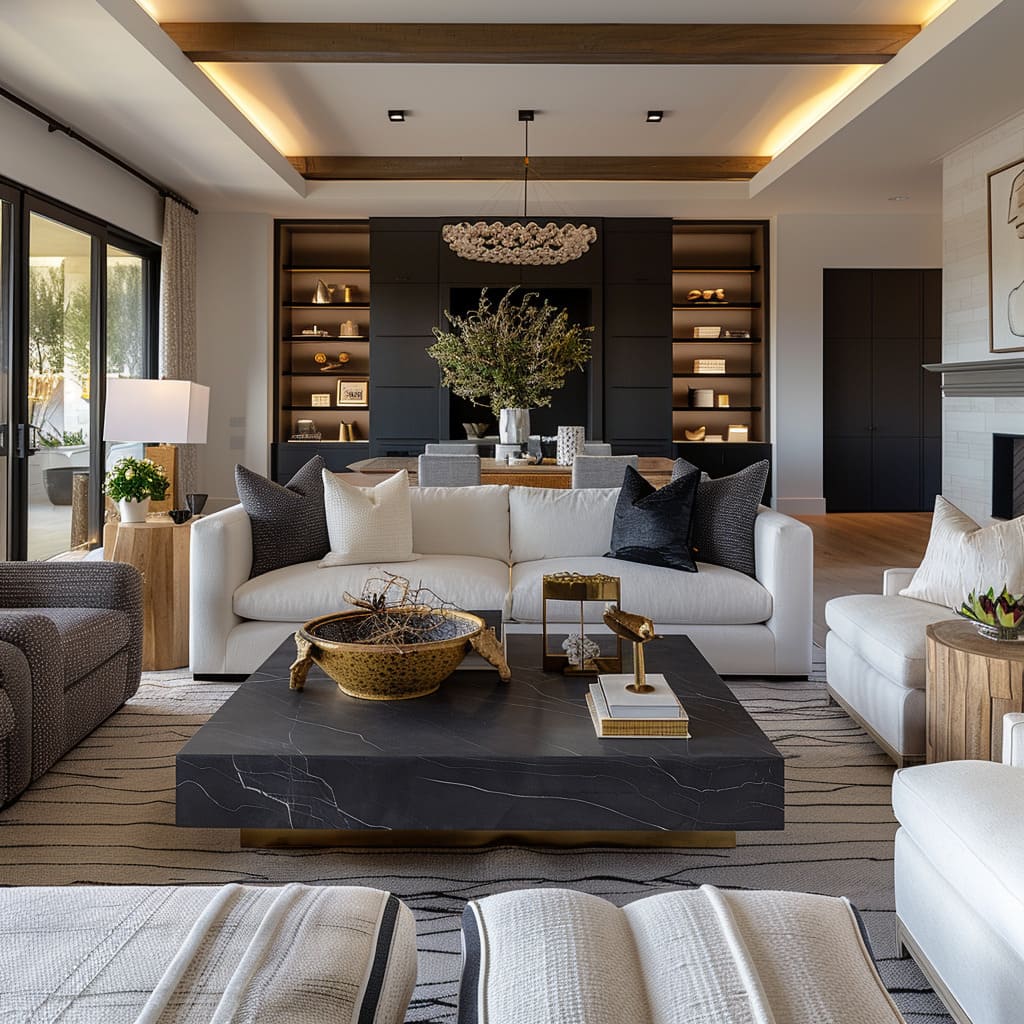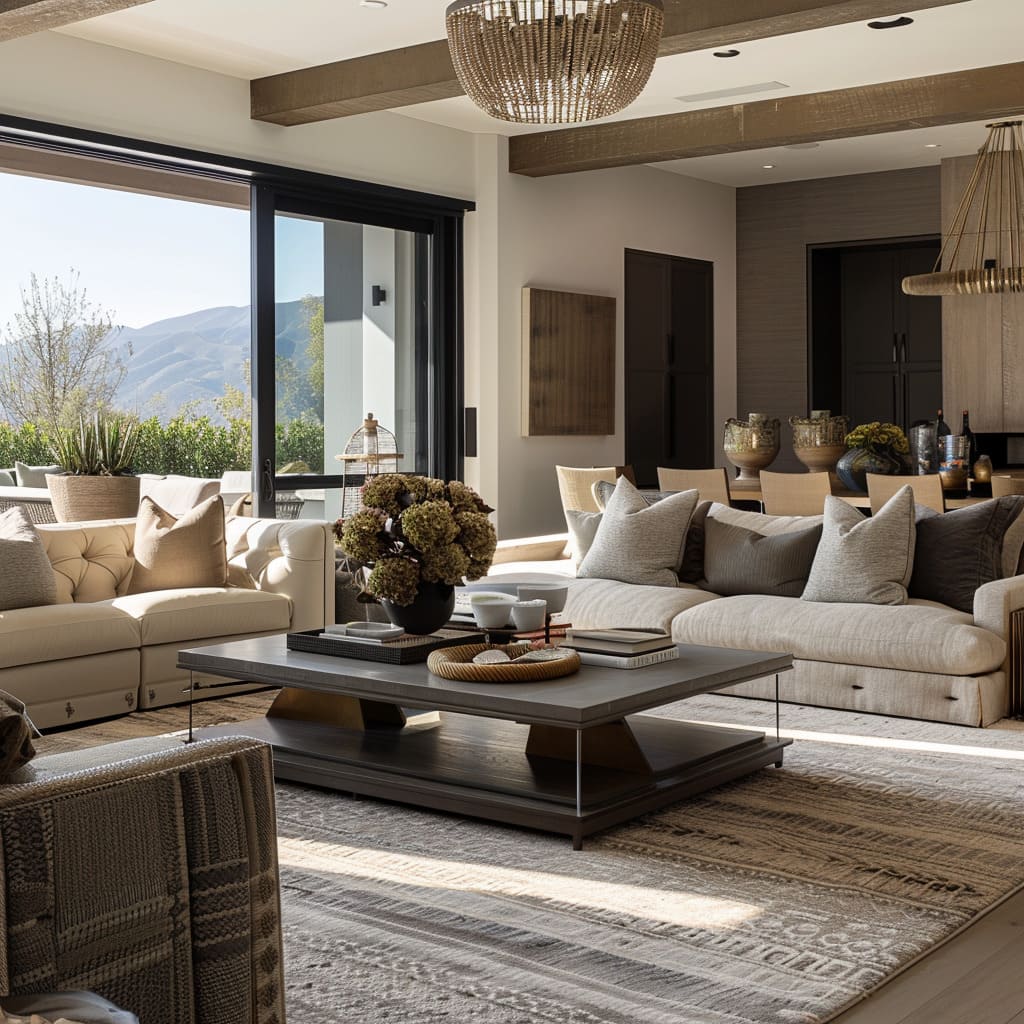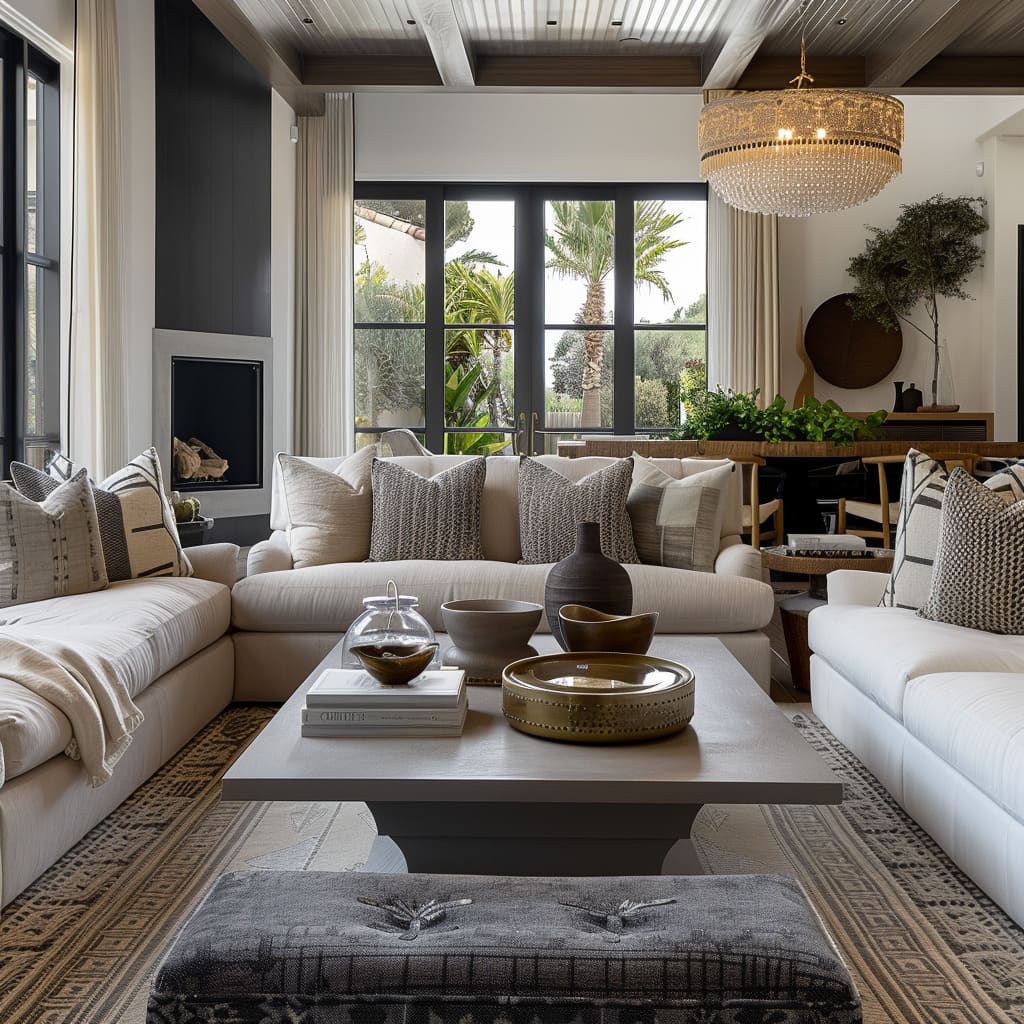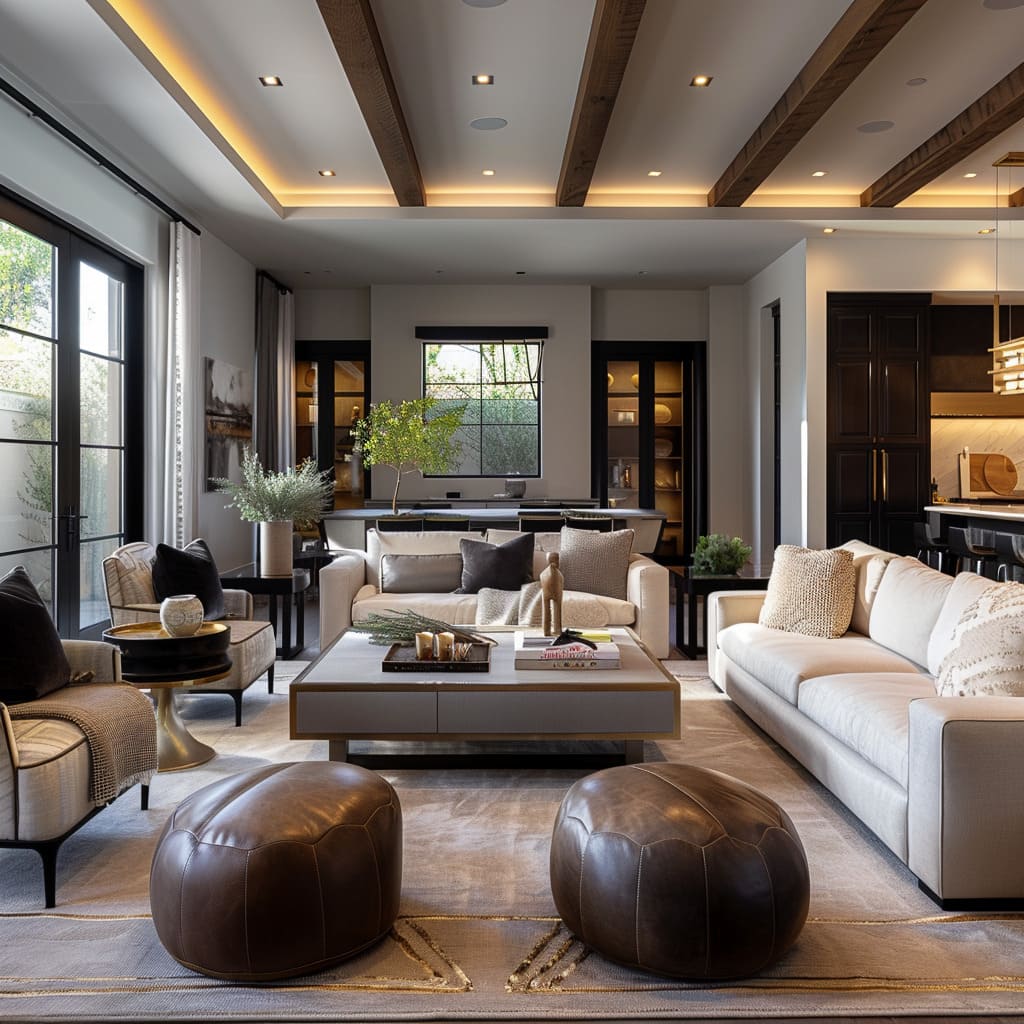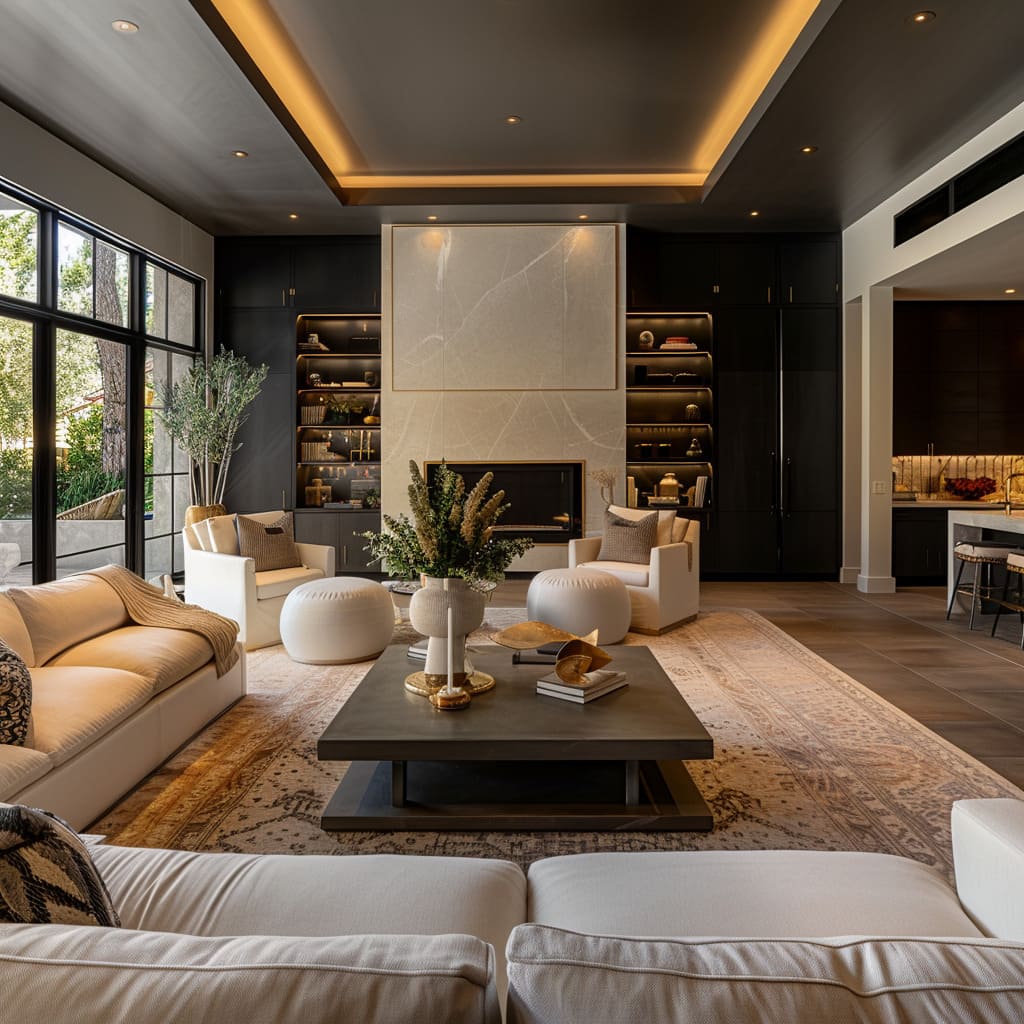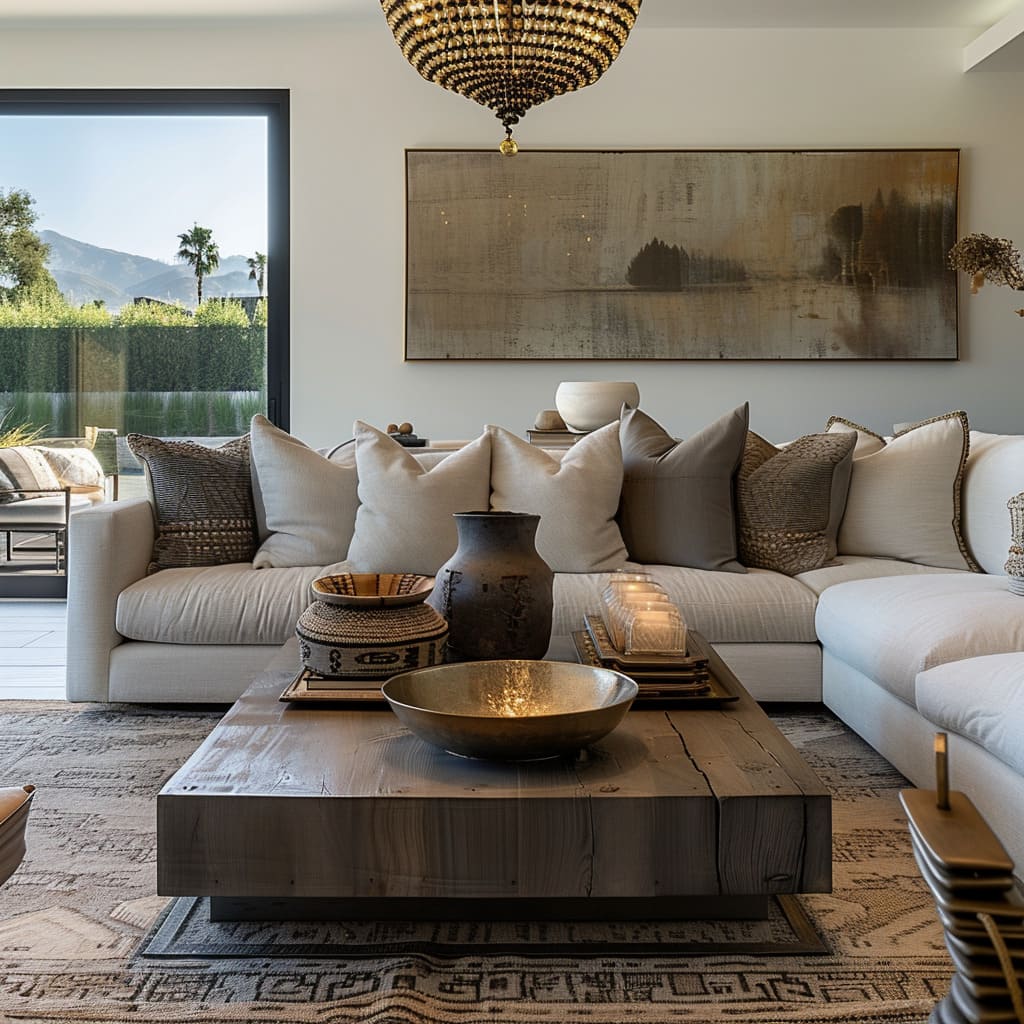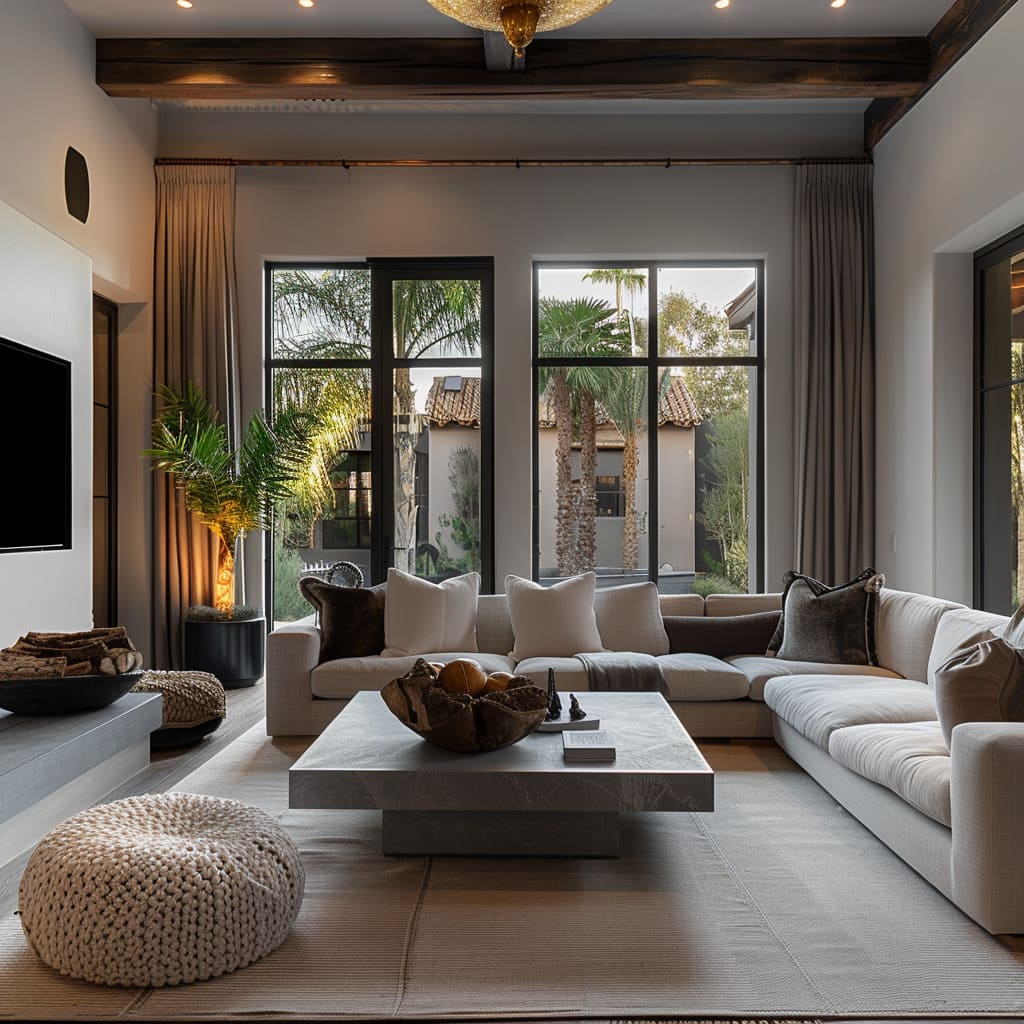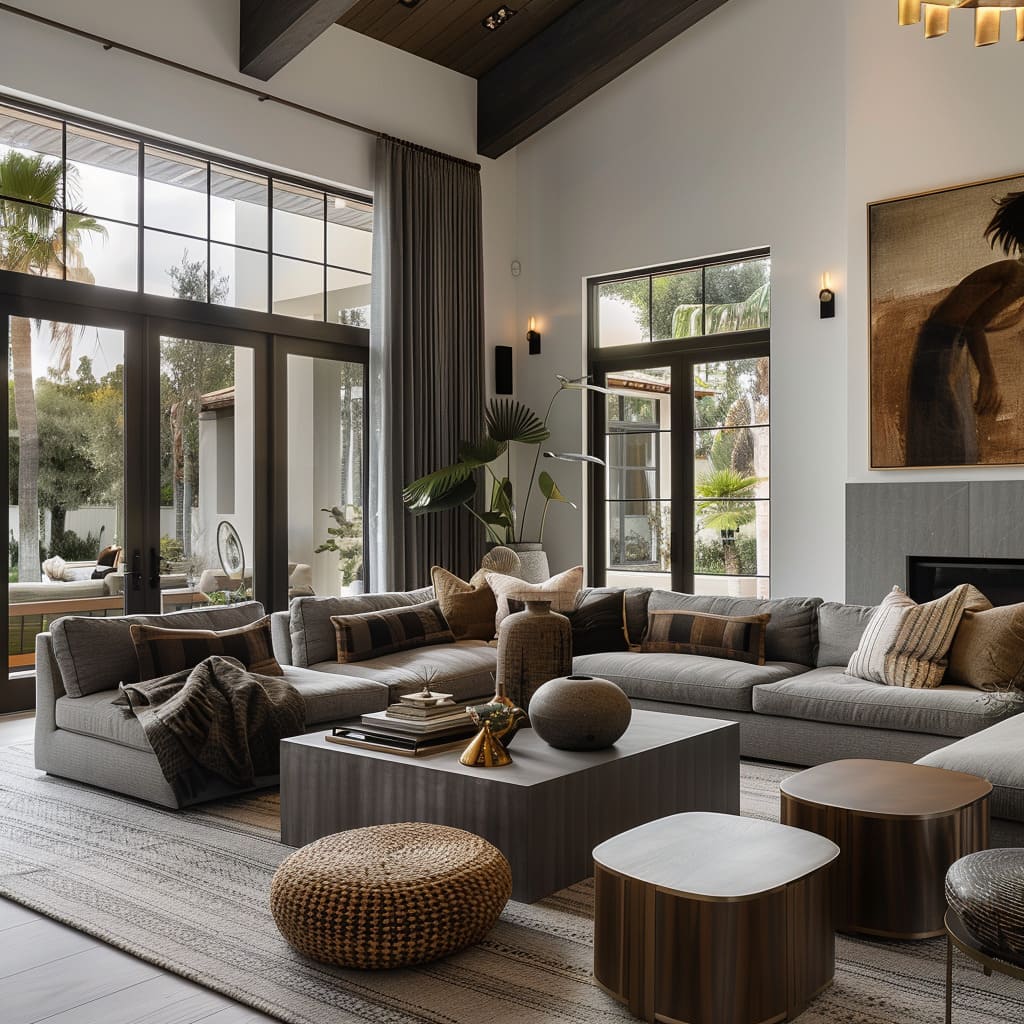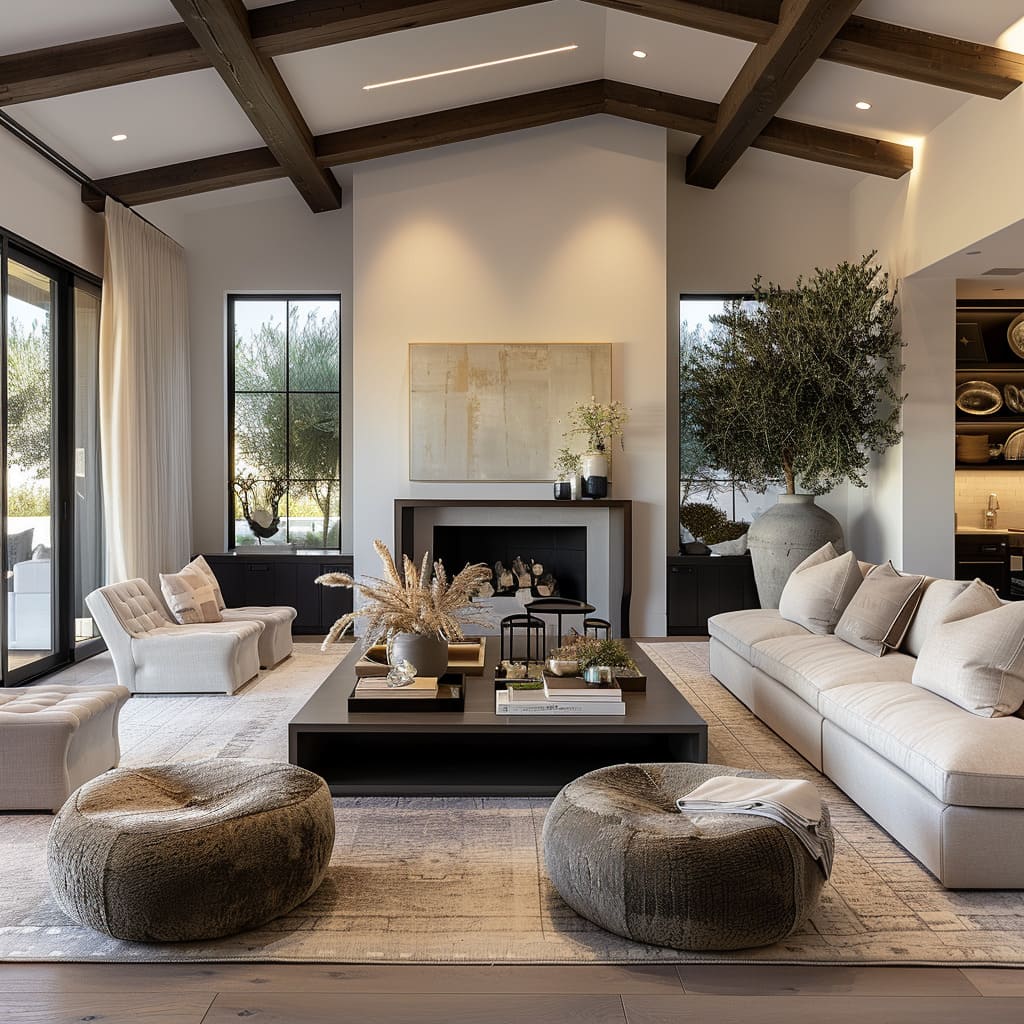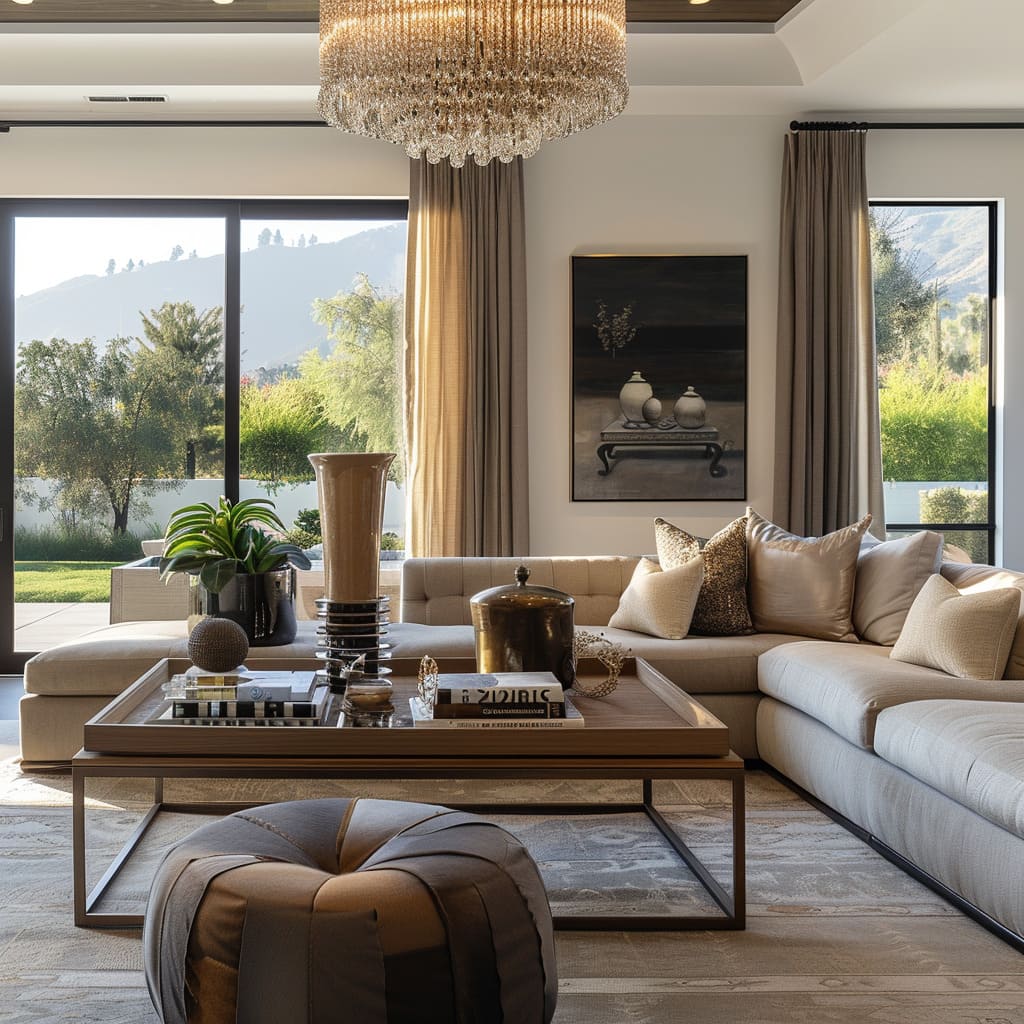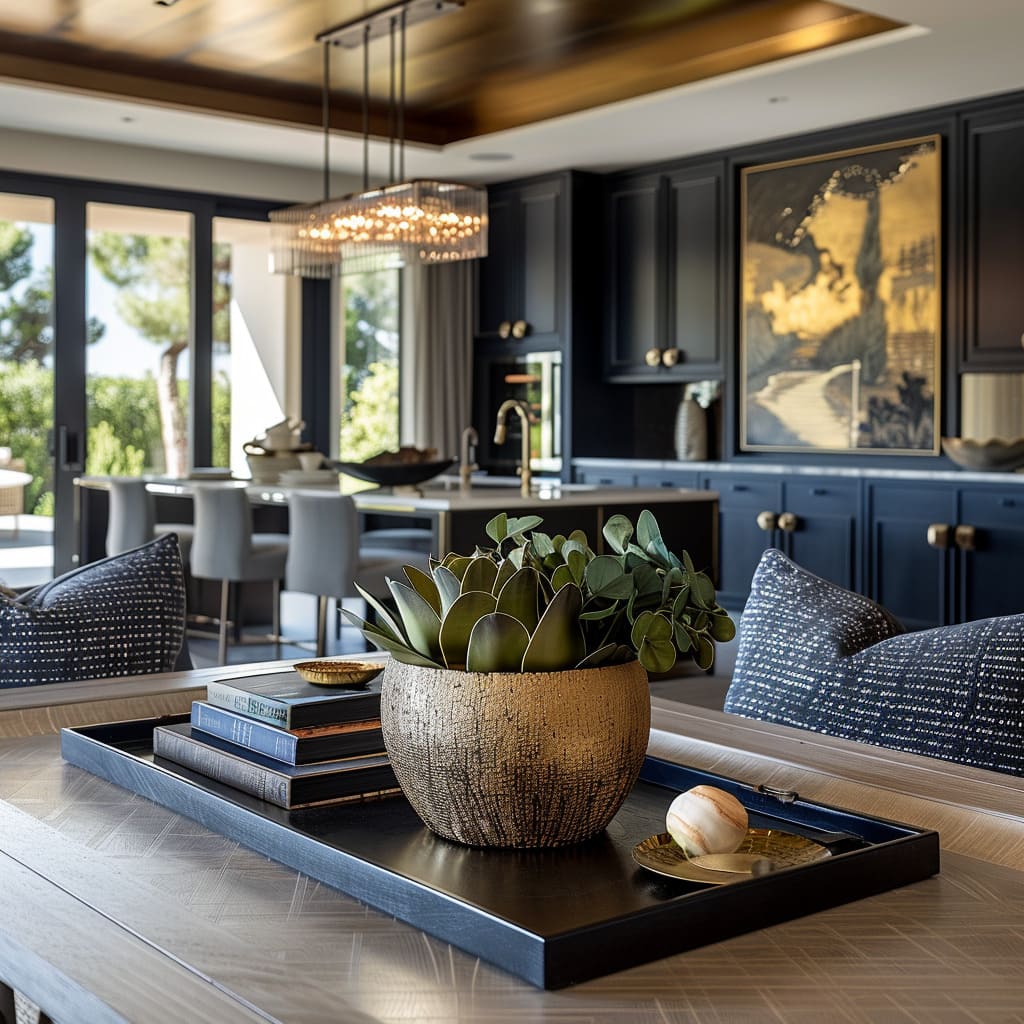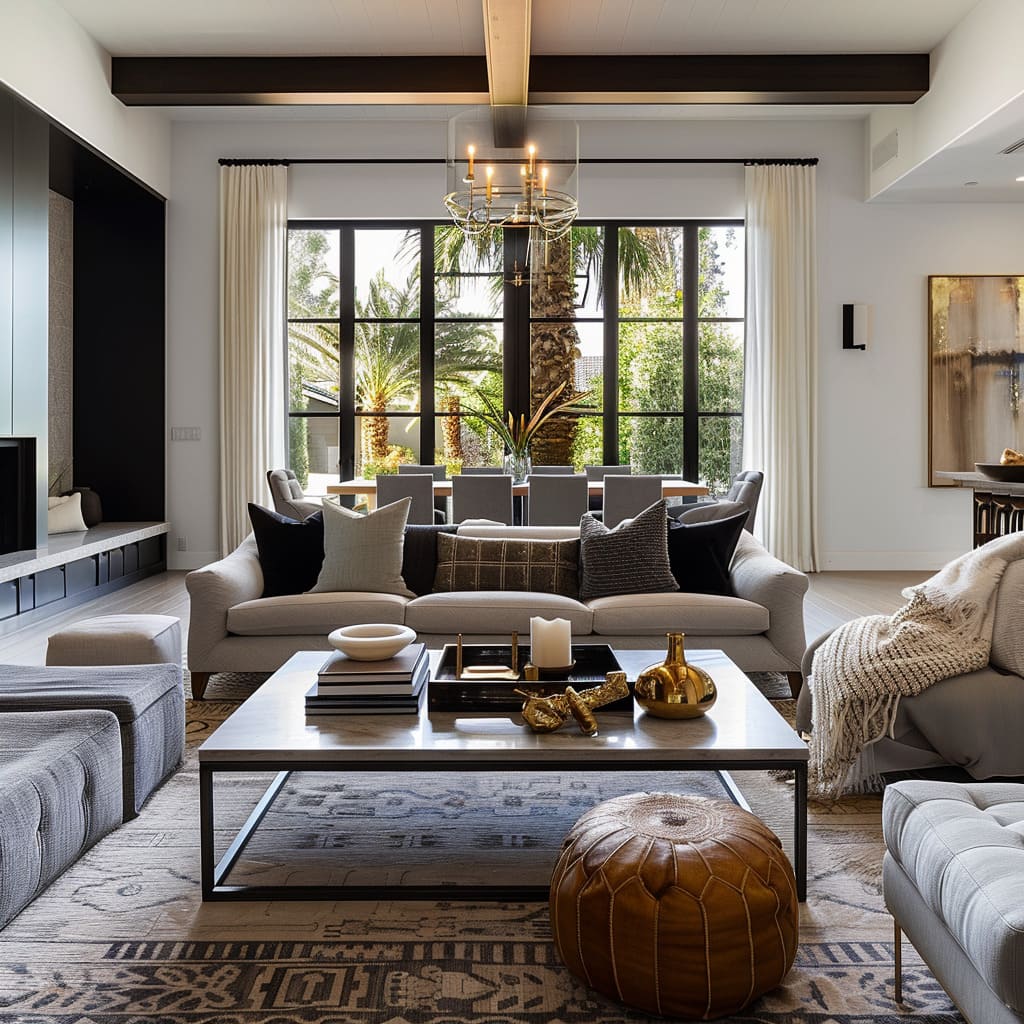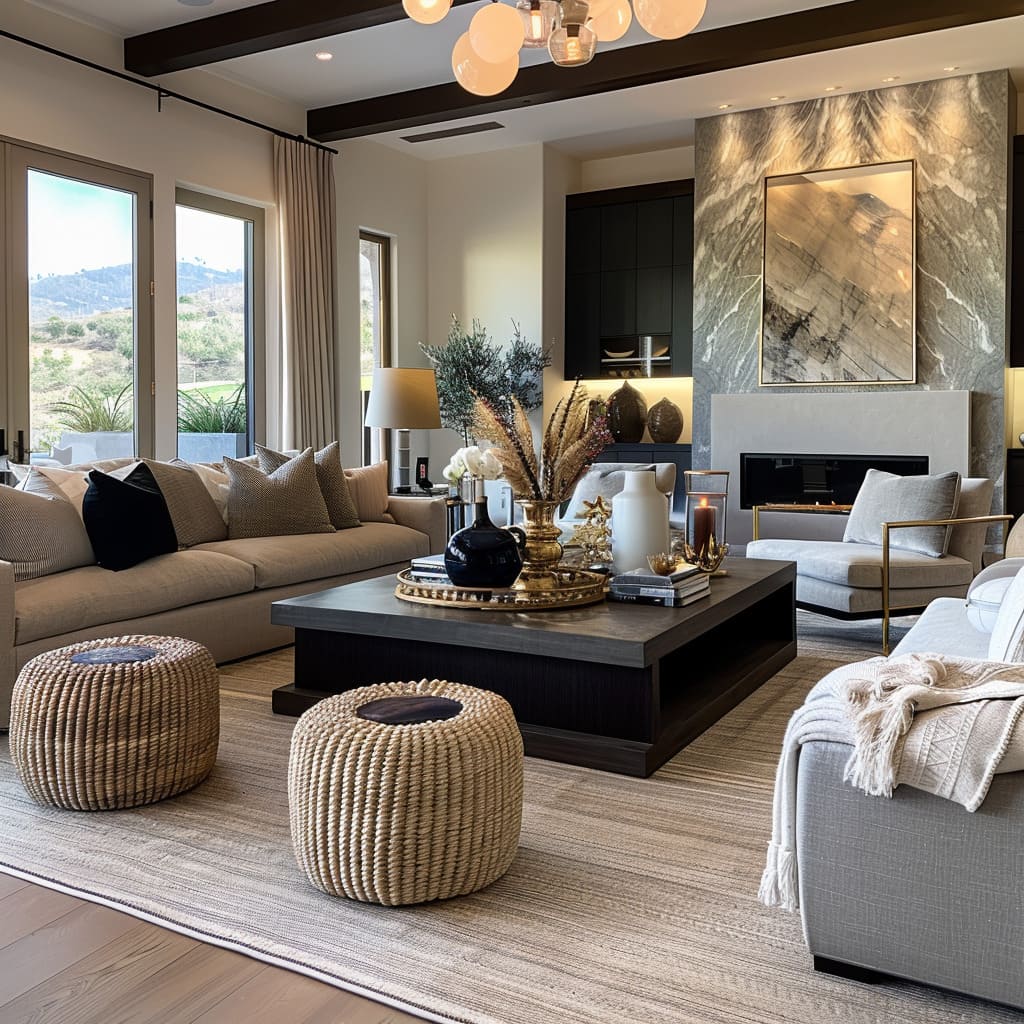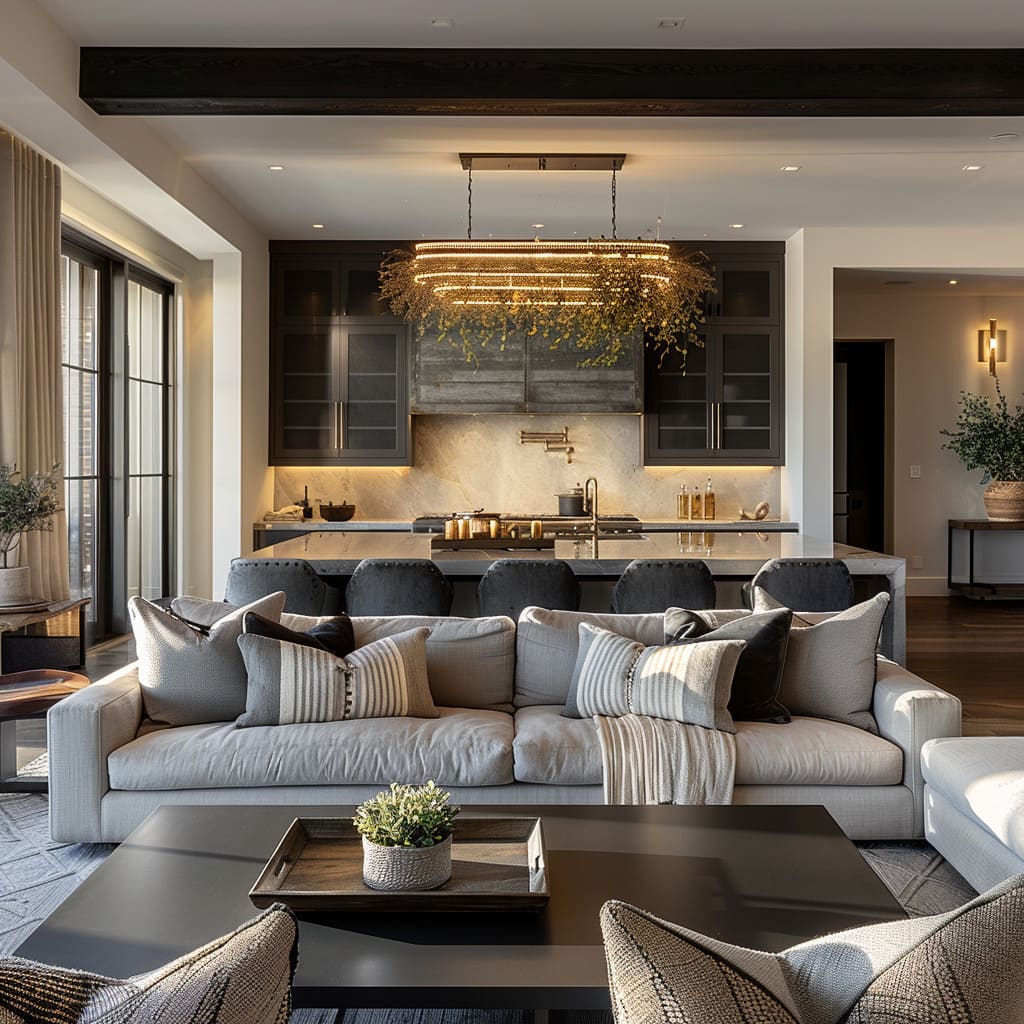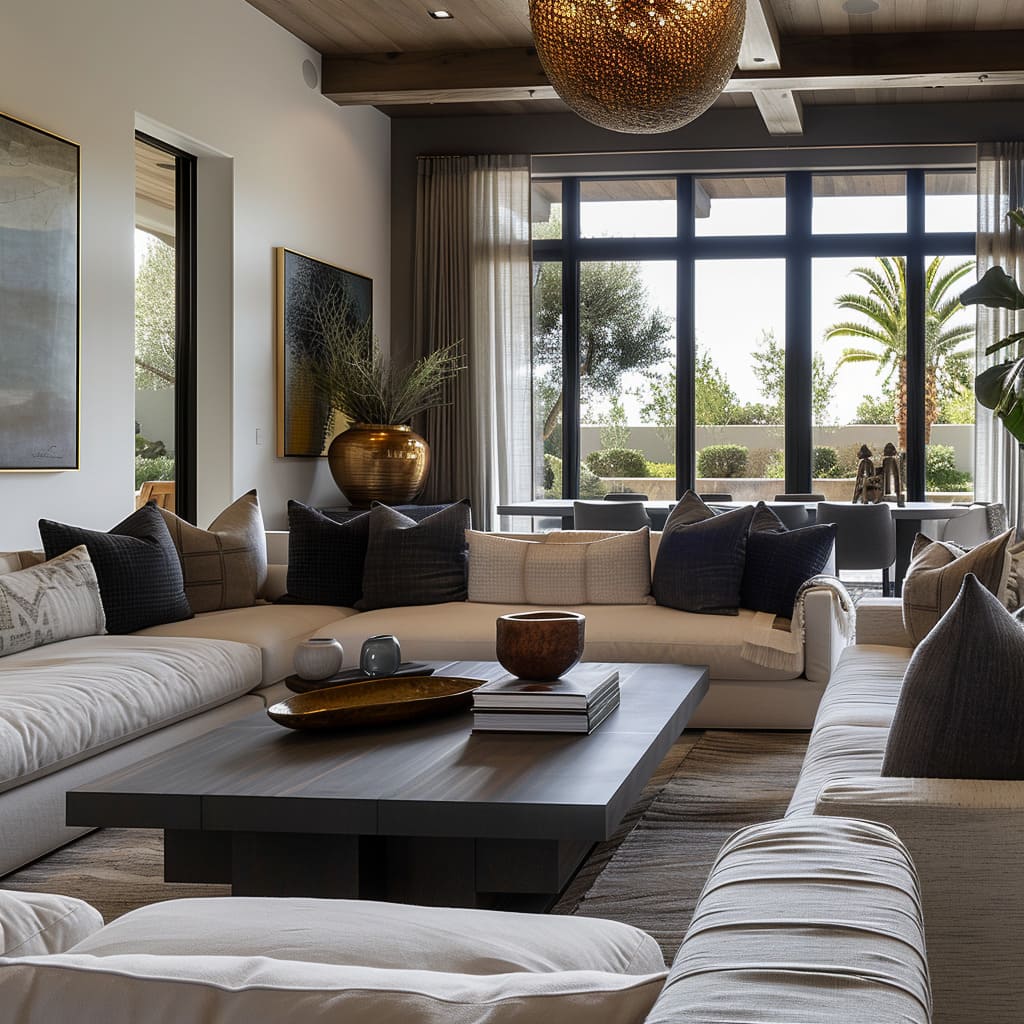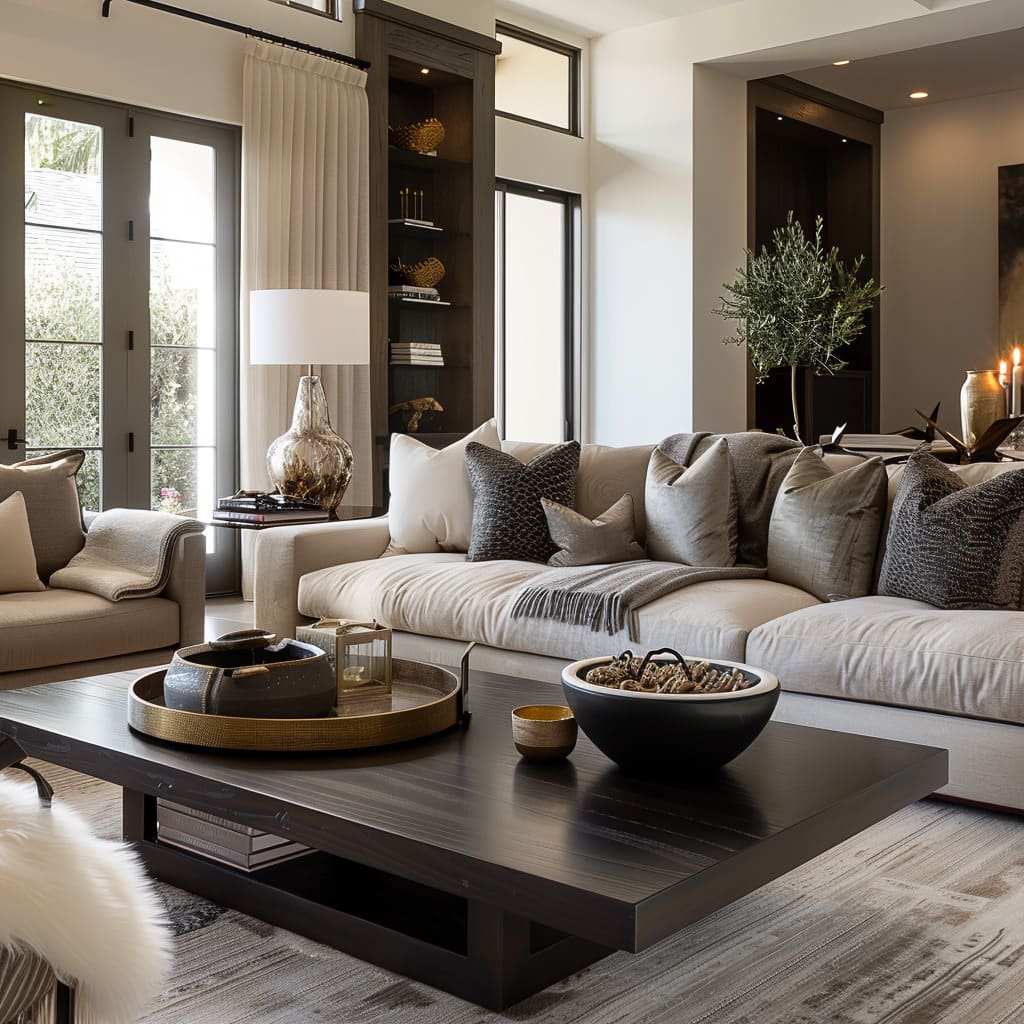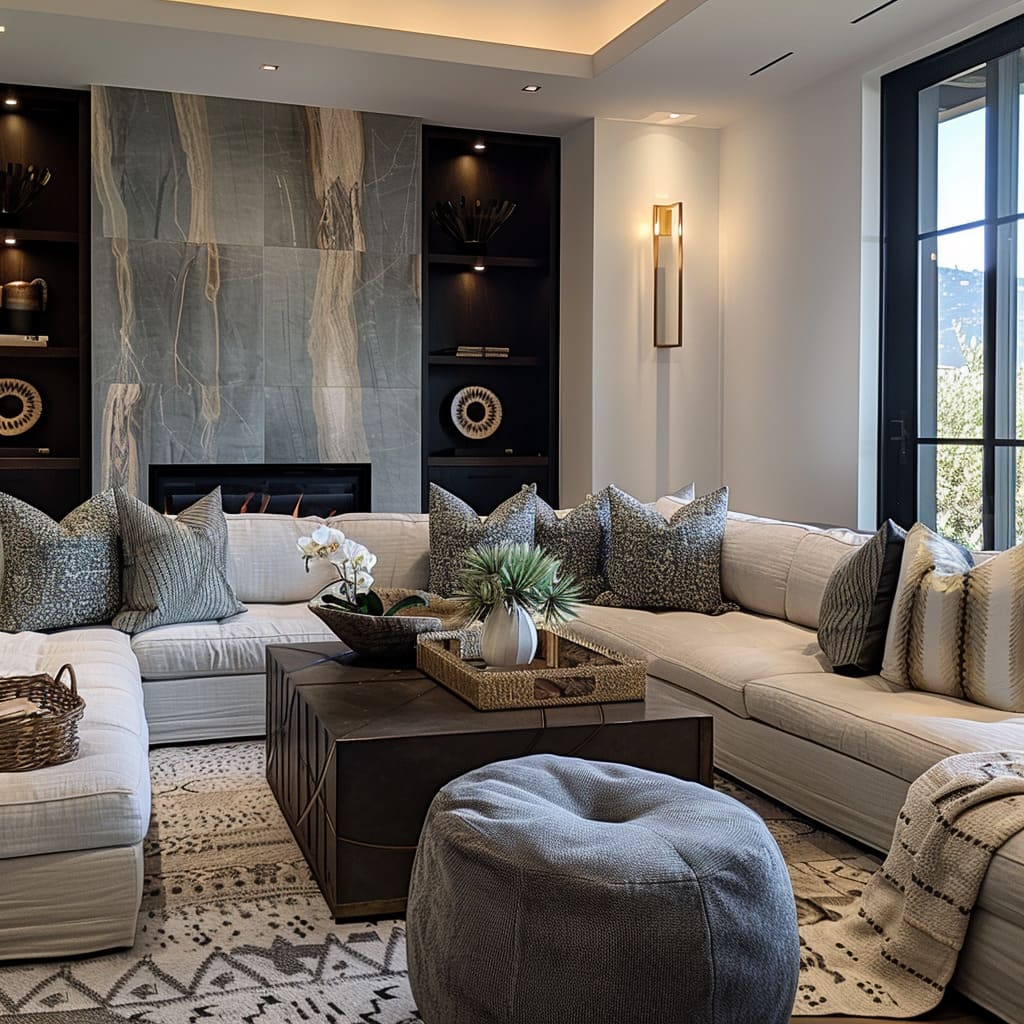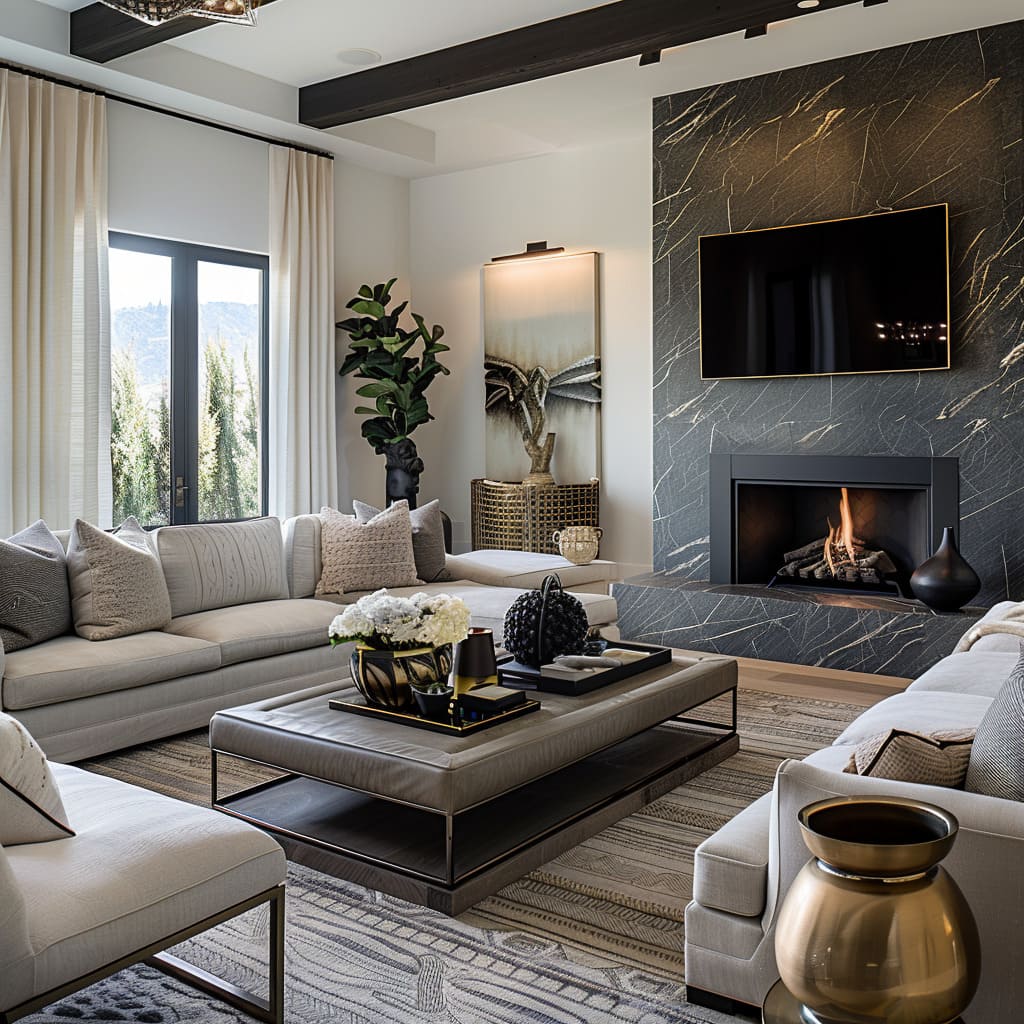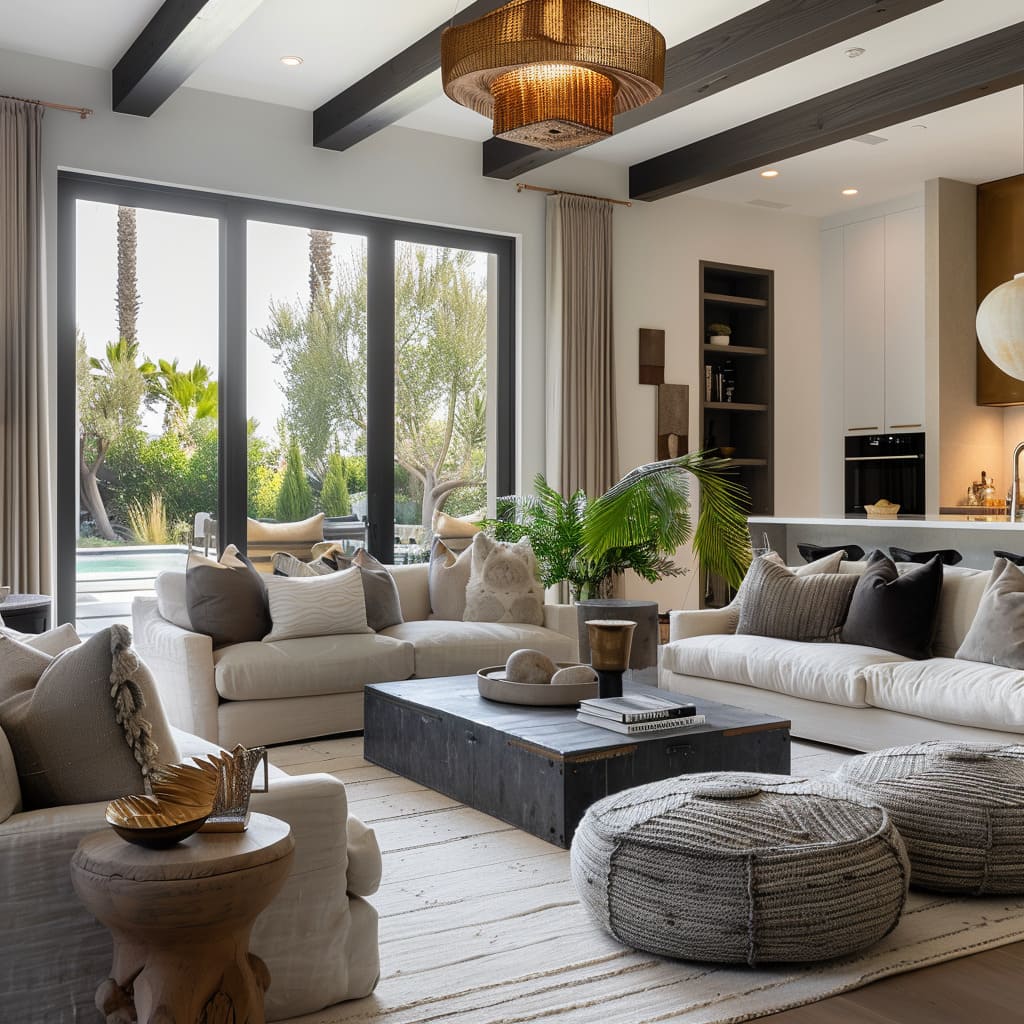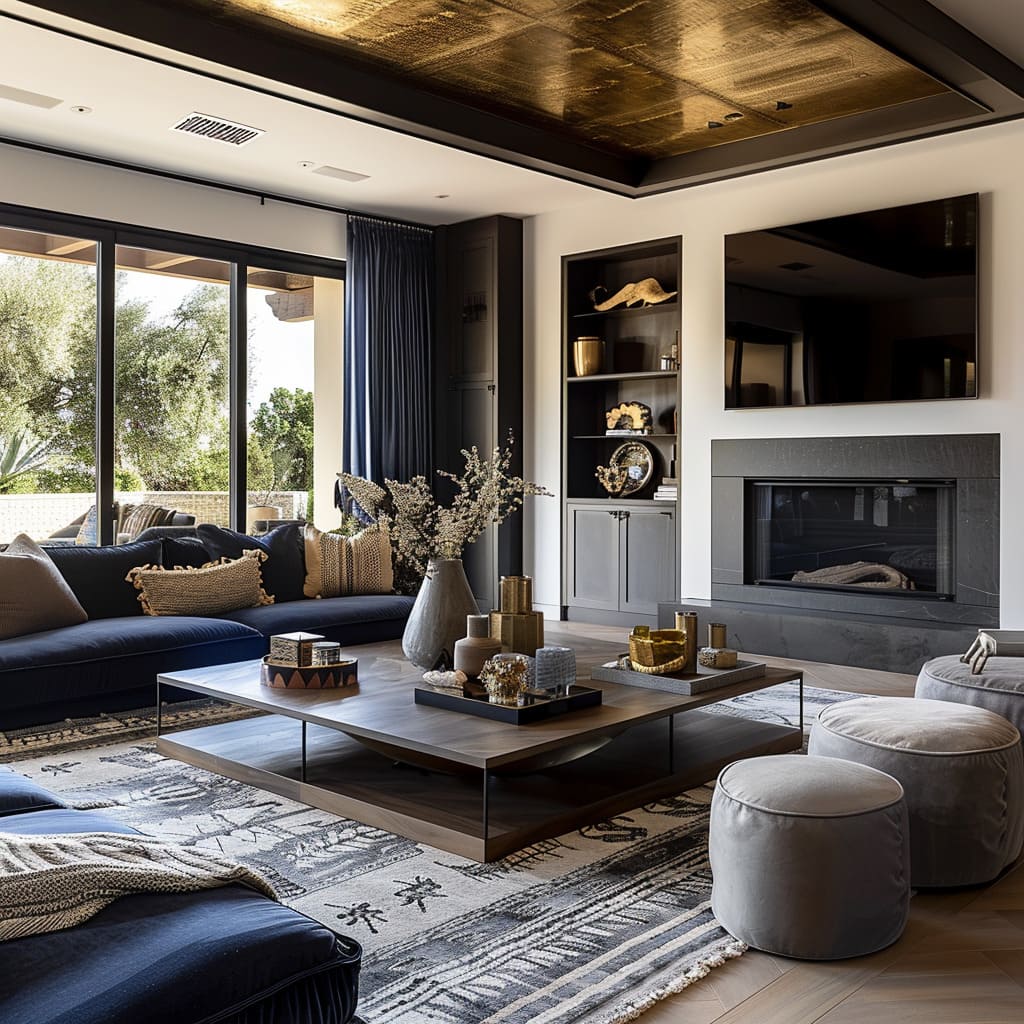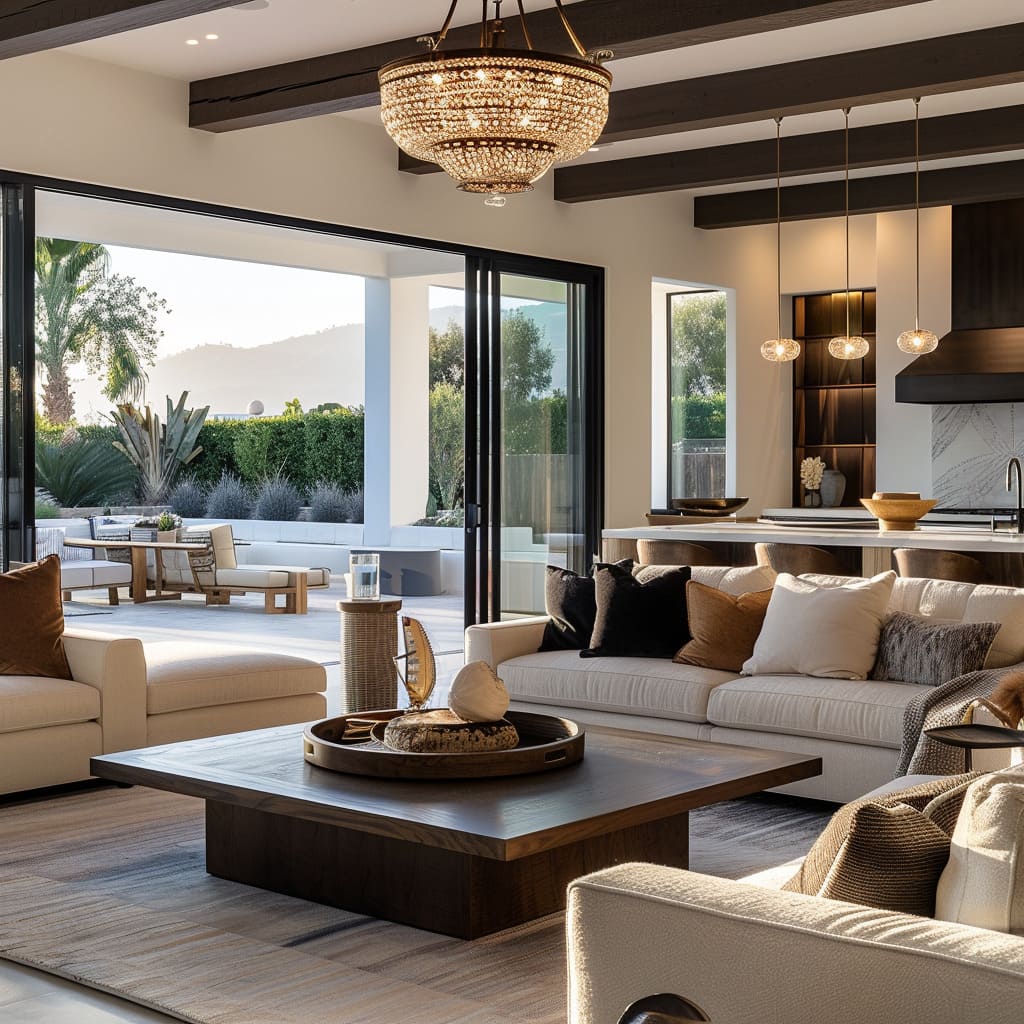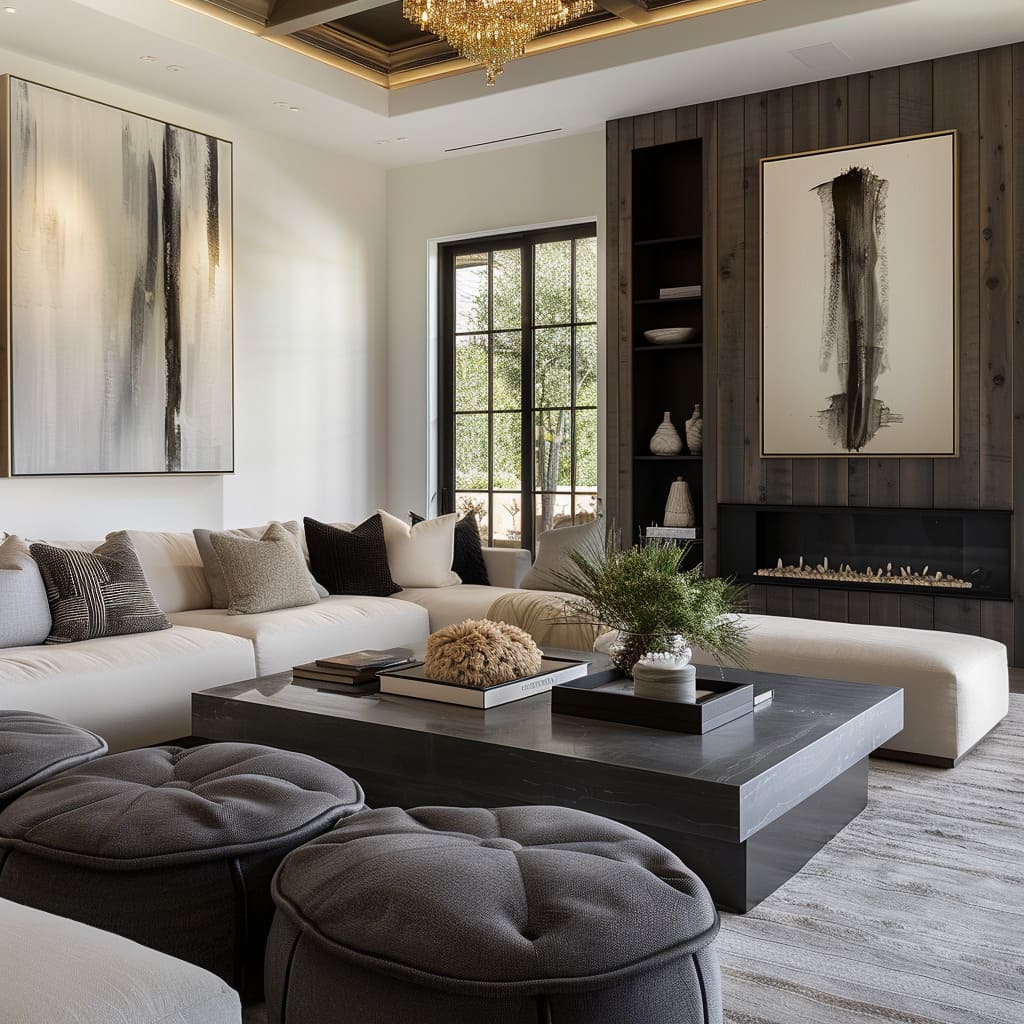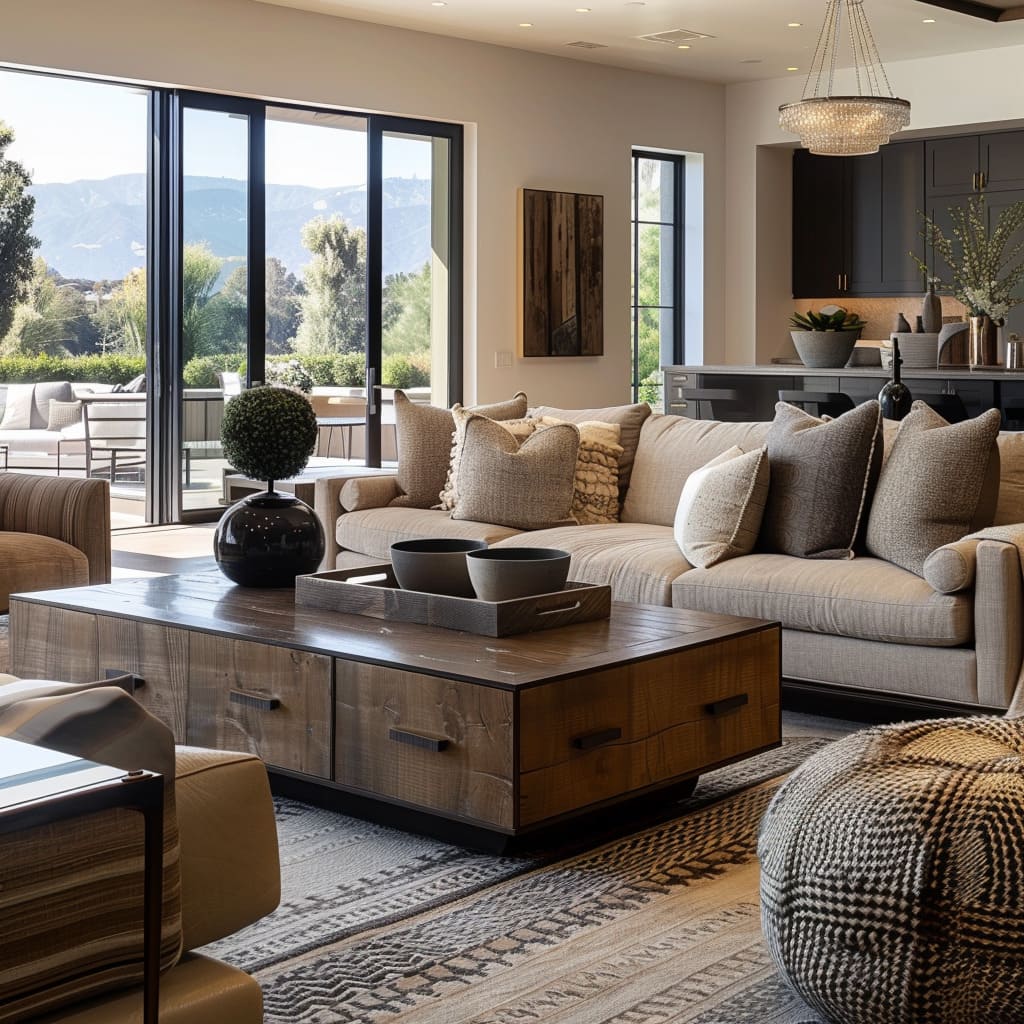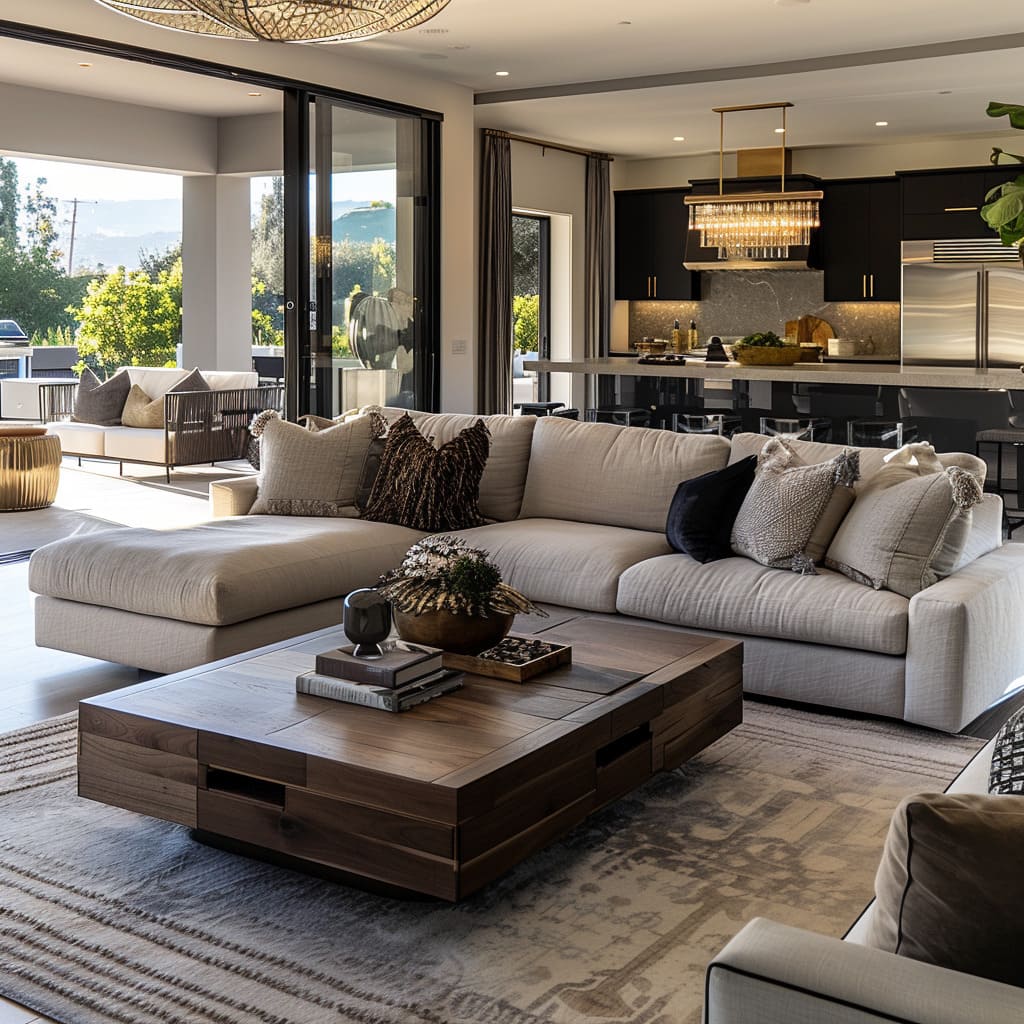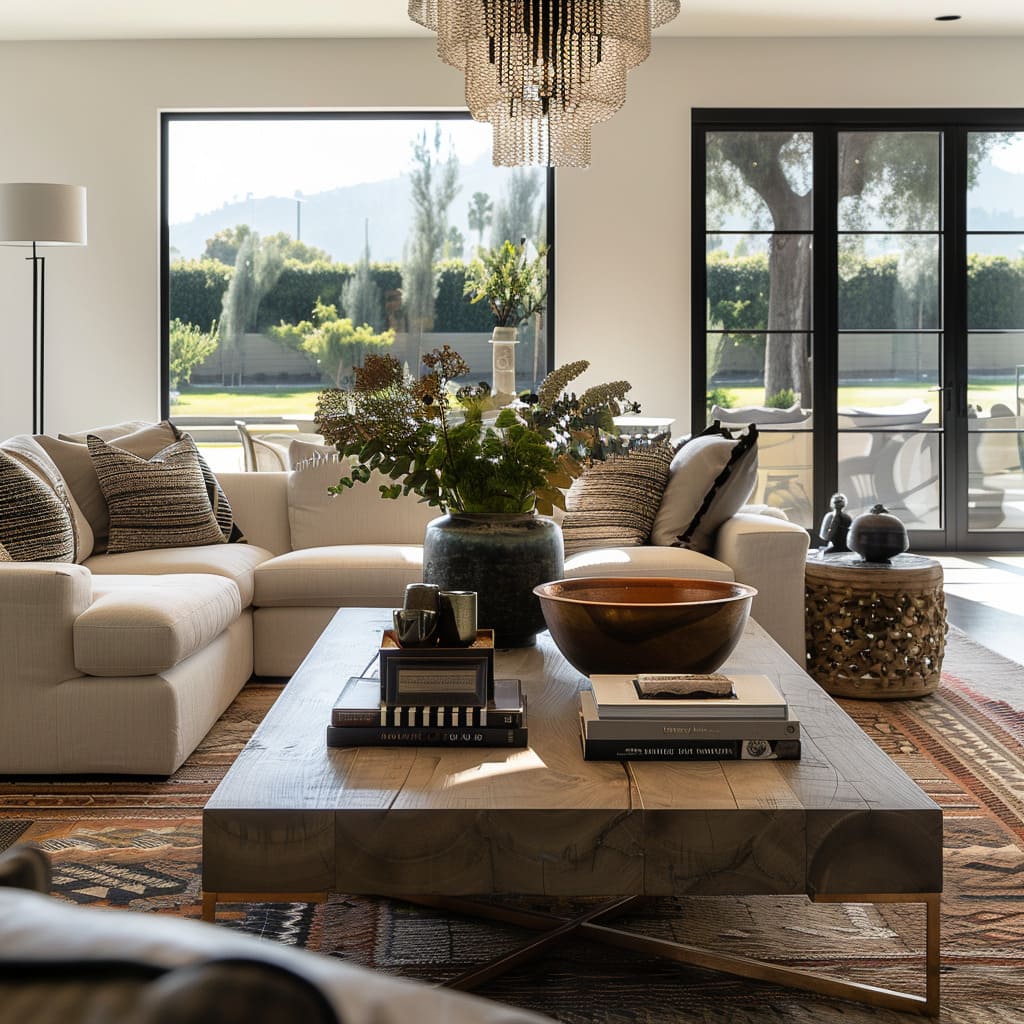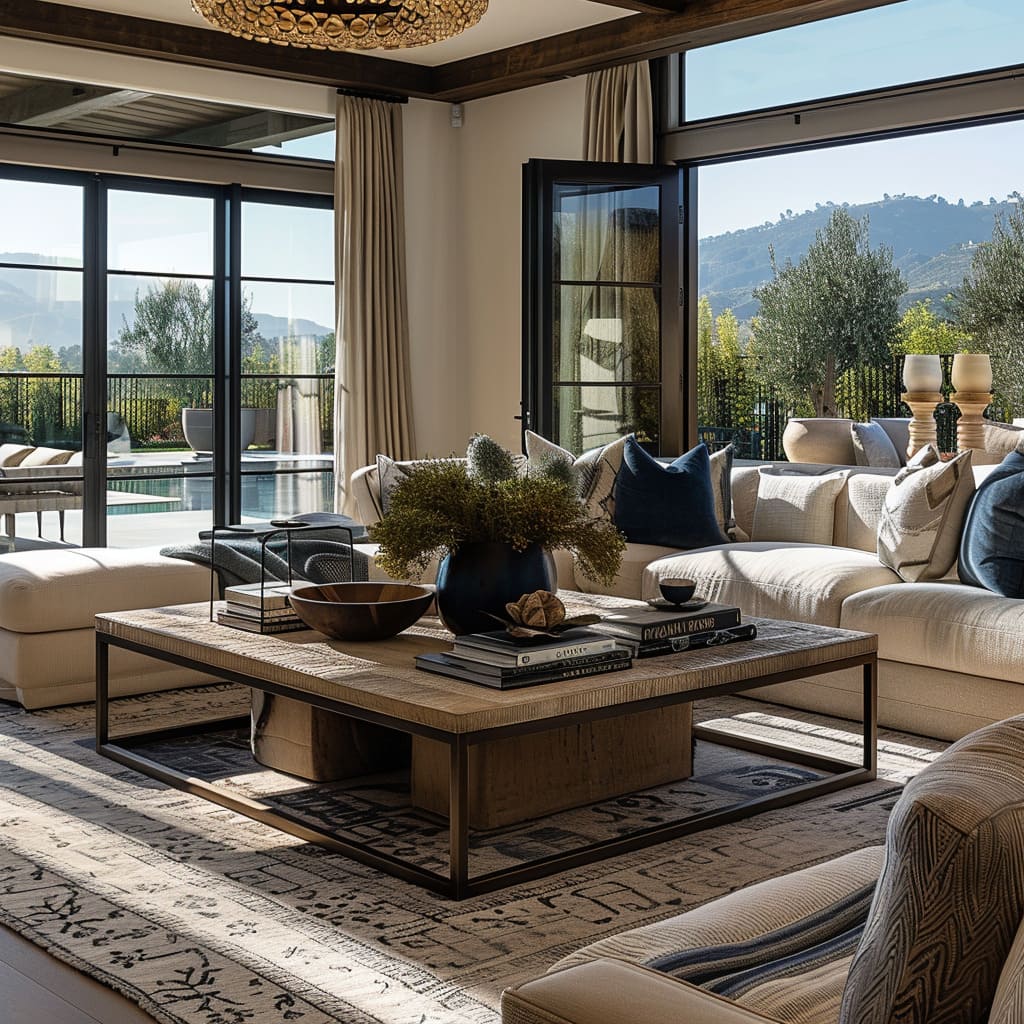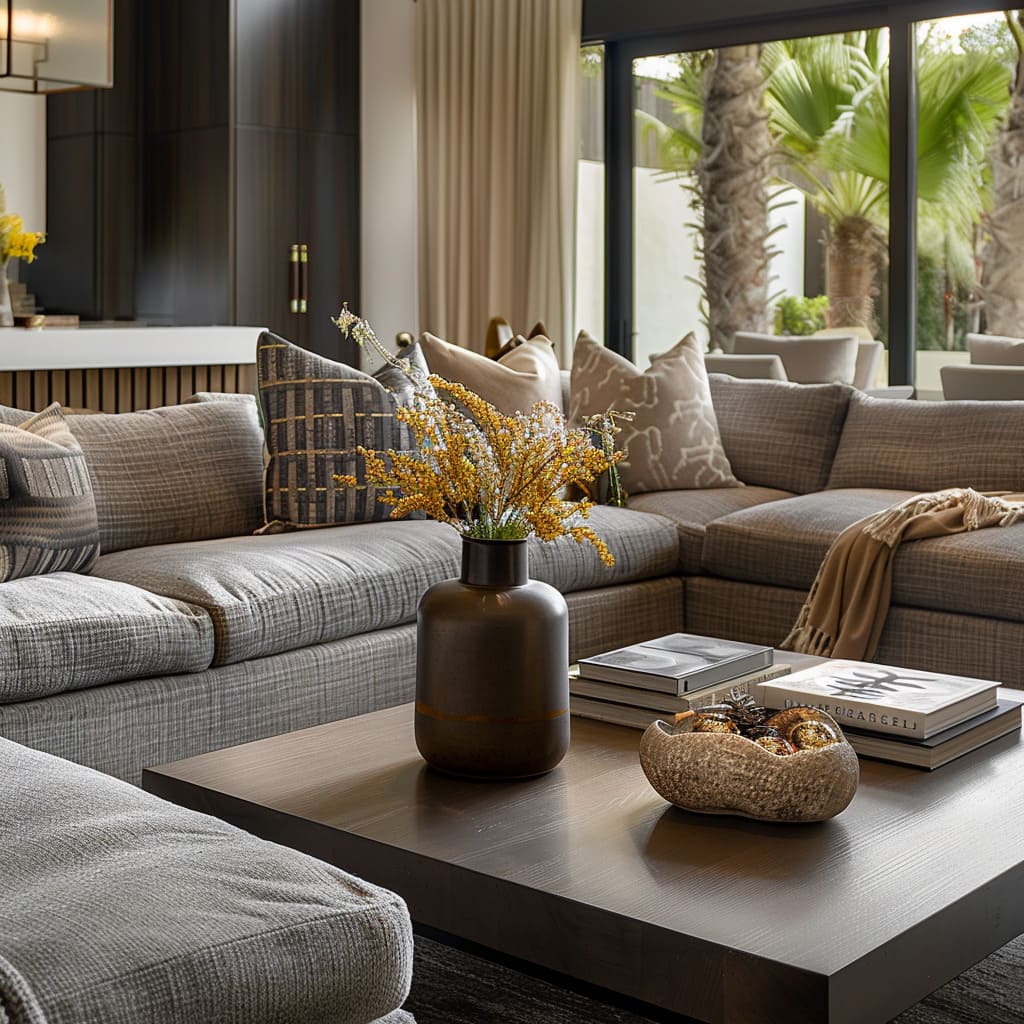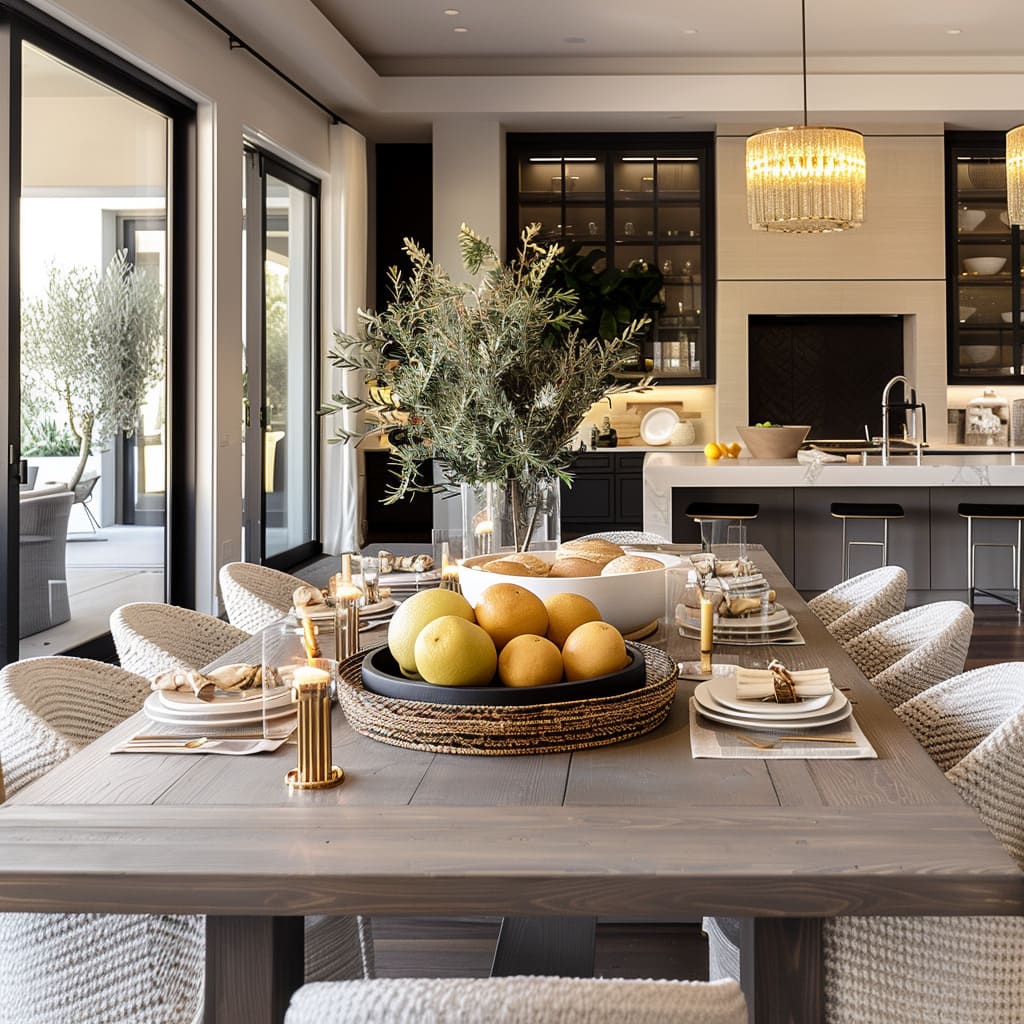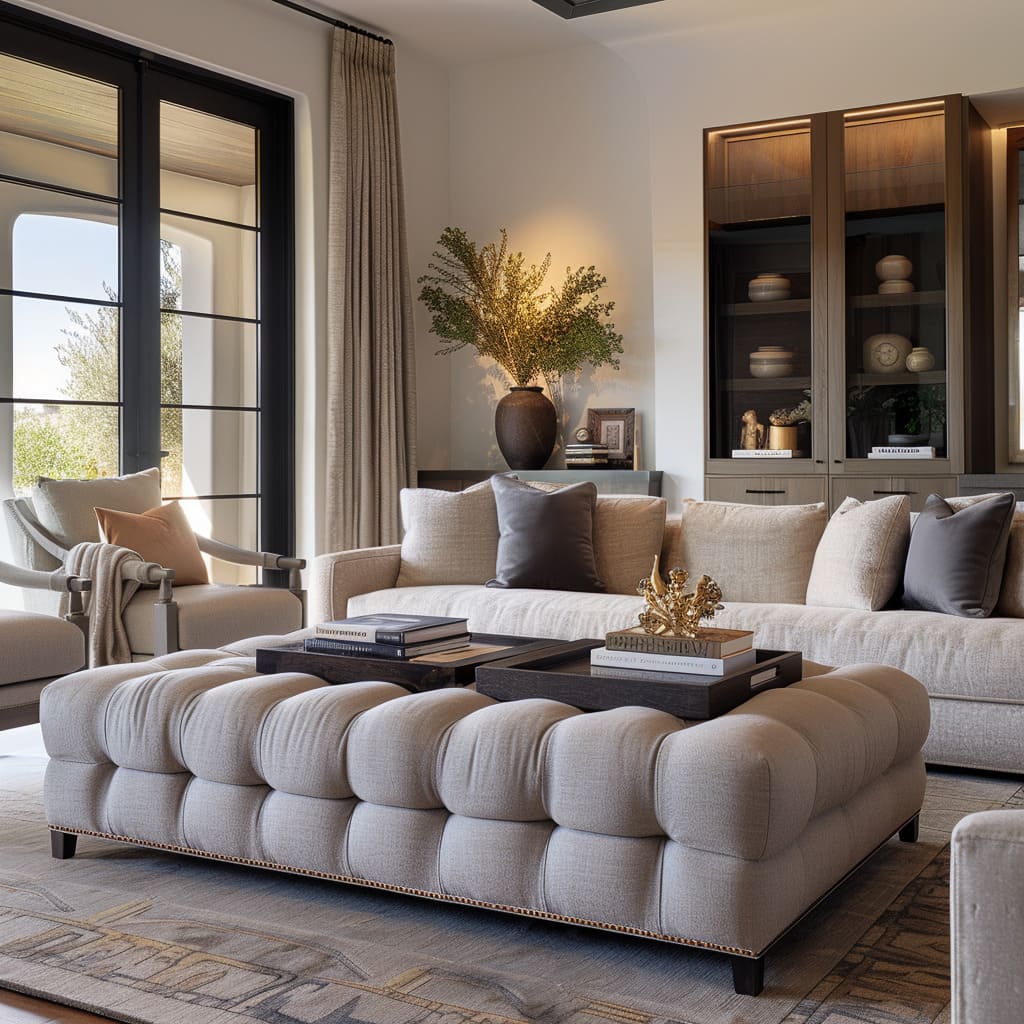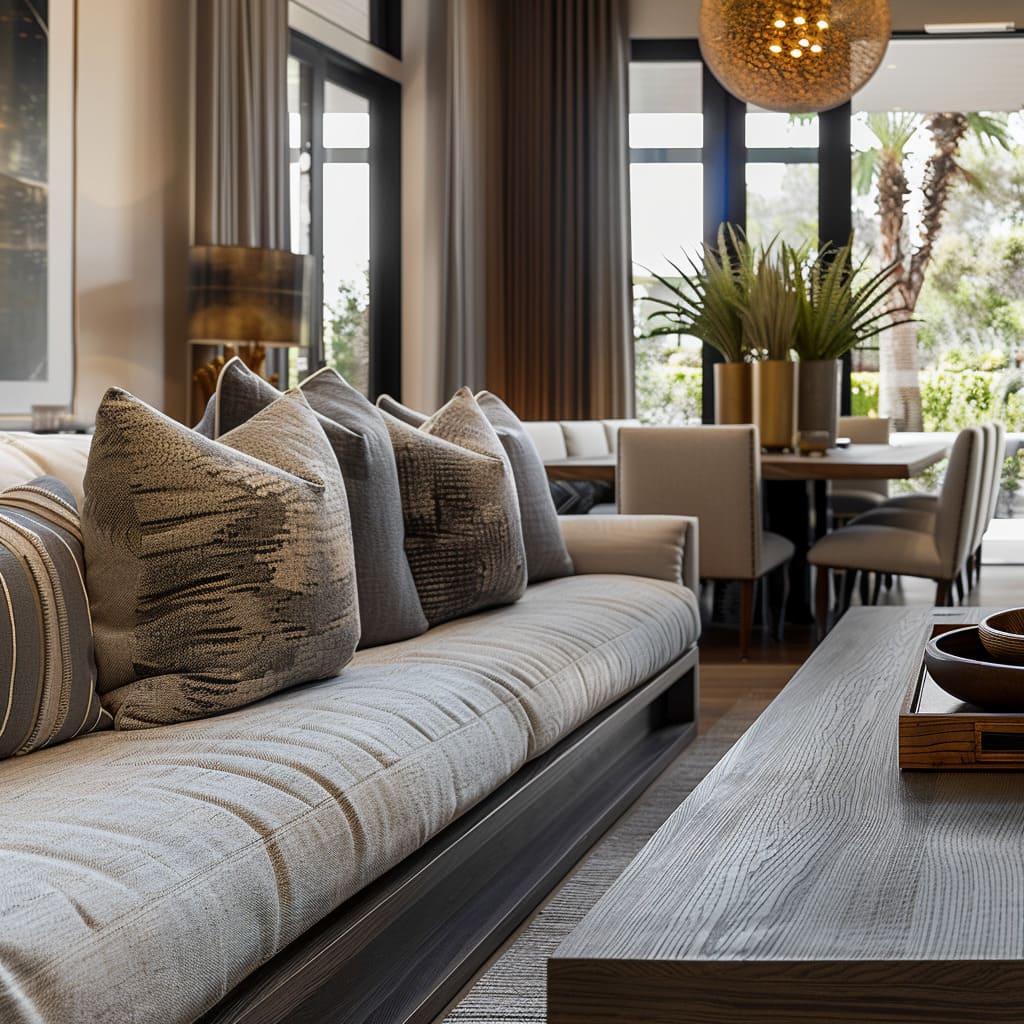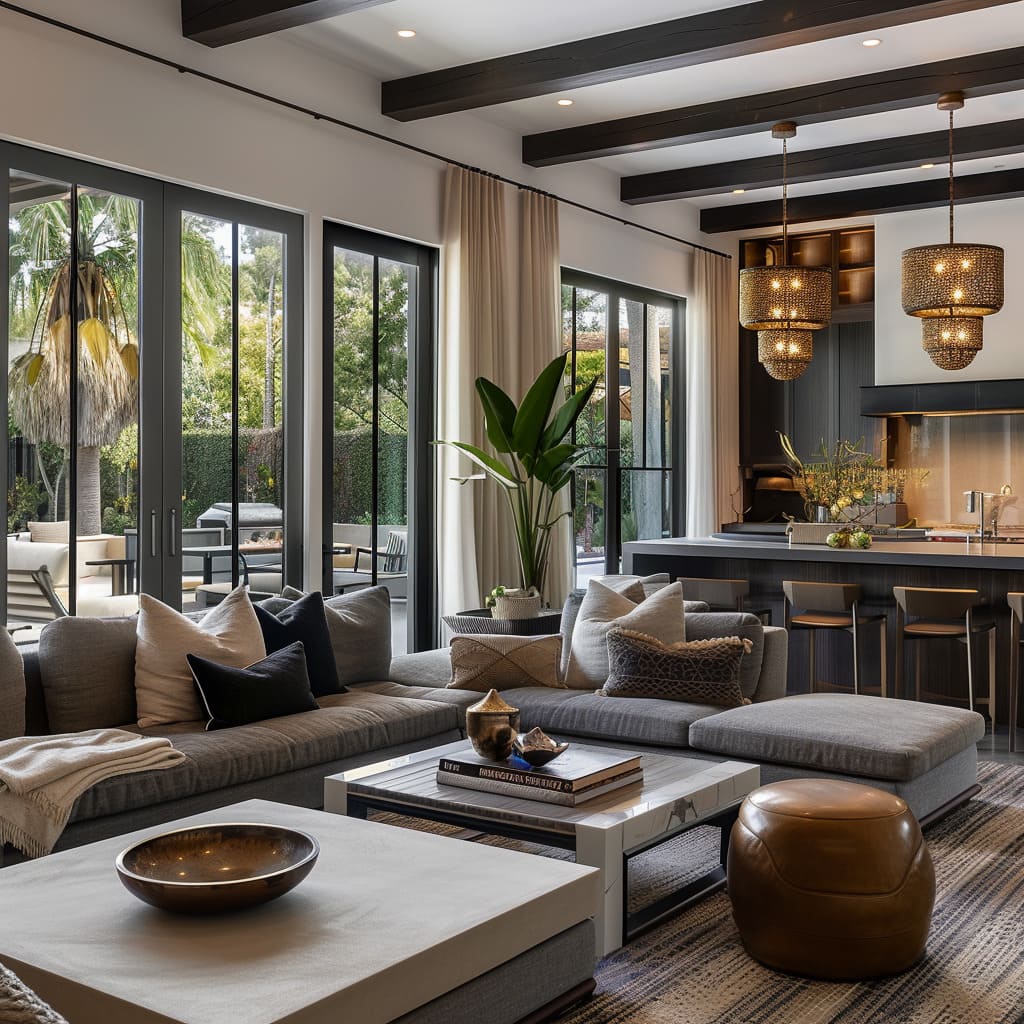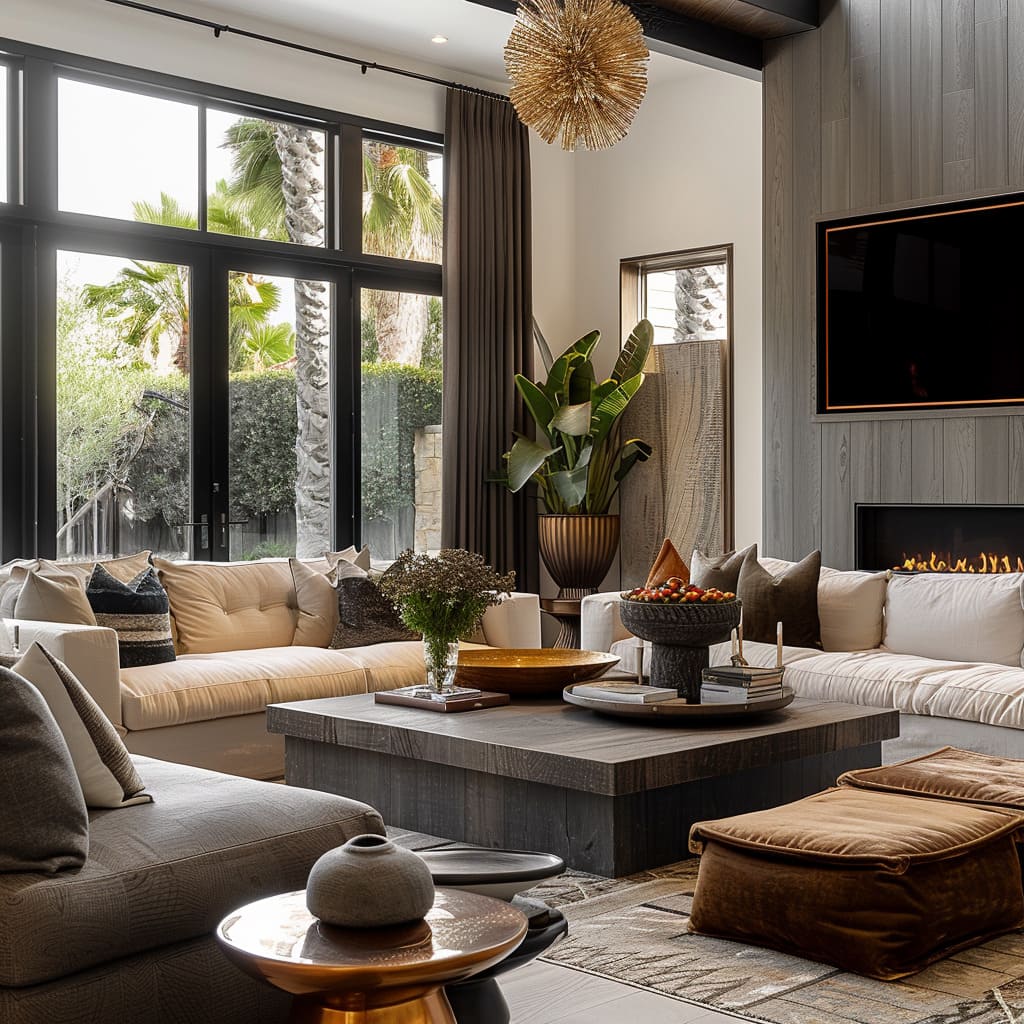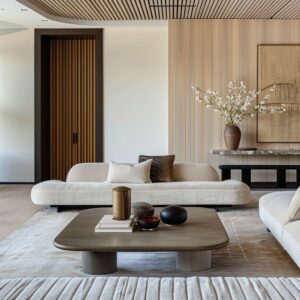In the symphony of spaces that we call home, each room, each corner, and each detail resonates with the stories of those who dwell within. The tapestry of contemporary interior design is rich with threads of artistic expression, technological integration, natural harmony, and meticulous spatial orchestration.
These elements intertwine to create environments that are not merely habitats but reflections of our identities, innovations, and interactions with the natural world. This exploration delves into the nuanced realms where personal collections become the narrators of our stories, where technology seamlessly enhances comfort, where materials speak the language of nature, and where the design dictates not just the aesthetics but the very rhythm of our daily lives.
As we navigate through these interconnected spaces, we discover the essence of modern living—spaces that are thoughtfully curated, intuitively integrated, and deeply resonant with the human experience.
Artistic Expression and Personalization
Art and personal collections are not mere decorations but the narrators of a home’s story, bringing to life the passions and journeys of those who dwell within. They offer a window into the soul of the space, transforming walls into galleries and shelves into exhibitions.
Substantial Textural Art and Cultural Artifacts are more than adornments; they are conversations in texture and heritage. These pieces demand interaction, beckoning you to feel the brush strokes and ponder the history embedded within.
The art is deliberately chosen for its tactile presence, creating an intimacy that two-dimensional works cannot rival. Cultural artifacts take pride of place, whether they’re ancient heirlooms or contemporary crafts, each piece adds a layer of narrative, inviting questions and exploration, fostering a connection that transcends the visual.
Curated Book Displays take on the role of intellectual anchors within a space. Books, often arrayed in thoughtful compositions, break the monotony of static decor.
They can be found not just lined neatly on shelves but also stacked on coffee tables, sometimes open, as if inviting a moment’s respite in the day. The selection is telling of the homeowner’s wanderings, both mental and corporeal, offering guests a glimpse into their minds.
These collections can often be thematic, highlighting subjects from art history to modern science, or color-coordinated to create a visual flow that harmonizes with the room’s palette.
This celebration of art and intellect transforms homes into deeply personal sanctuaries. It’s a testament to the resident’s identity, an ever-evolving exhibition that parallels the growth and shifts in their life.
The careful curation of these elements serves not just the aesthetic but weaves a rich tapestry of personal history and cultural dialogue. Each object, each title, is a piece of a puzzle that, when assembled, presents a portrait of the human behind the habitat.
Integration of Comfort and Technology
The modern home is a nexus where the boundaries between technology and comfort blend, creating environments that cater to the ease and well-being of its inhabitants. The seamless melding of innovation with plush comfort elevates the living experience, embedding functionality within the fabric of domestic life.
Hidden Lighting illuminates spaces with a subtlety that belies the sophistication of its design. Embedded in the architecture, this lighting creates a soft ambiance without the glare of exposed bulbs or fixtures, offering a warm luminescence that enhances the natural rhythms of day and night.
This architectural alchemy transforms the mundane task of lighting into a sculptural element that plays across surfaces, enhancing textures and colors with a painterly touch.
Discrete Media Integration is the art of incorporating technology in a way that it whispers its presence rather than shouts. Speakers are heard but not seen, screens blend into the decor when not in use, and all the modern trappings of a connected world are accessible with the subtlest of interventions.
This approach respects the aesthetic integrity of the space, ensuring that the sleek lines and crafted details are not compromised by the necessary appendages of technology.
Versatile Seating Options offer a repertoire of relaxation and engagement within a room. From the generous embrace of a plush sofa to the casual sprawl on an expansive ottoman, each piece of furniture is chosen for its ability to adapt to the mood and function of the moment.
This diversity of seating creates a dialogue within the space, offering quiet corners for solitary contemplation and open areas for communal interaction.
Inviting Nooks are the quintessential retreats within a bustling home environment. Whether it’s a window seat bathed in soft light or a secluded alcove lined with cushions, these spaces provide a sanctuary for the senses.
They are the physical manifestation of a pause, a place to breathe and be, insulated from the thrum of the household’s pulse.
In concert, these features orchestrate an interior where the presence of technology serves to underscore comfort. It’s a design philosophy that embraces the best of what modern innovation offers while retaining the essence of what makes a space a home – warmth, ease, and a refuge from the world’s cacophony.
The result is a living space that feels intuitive, responsive, and, above all, inviting, a testament to the invisible yet integral role technology plays in our comfort and contentment.
Is Your Budget Ready for the Job? Find Out Now!
Check How Far Your Budget Will Take You – Enter Your Info for a Personalized Breakdown.
[budget_renovation_calculator]
Natural Harmony and Material Dialogue
In contemporary interior design, the lines between the man-made and the organic are artfully blurred, creating spaces that resonate with the inherent balance found in nature. This philosophy of design seeks not just to coexist with nature but to integrate it, crafting spaces that are a tribute to the textures and forms of the natural world.
Organic Element Integration is evidenced by the infusion of stone, wood, and natural fibers within the home. These elements often bear the marks of their natural origins—grains, knots, and textures that tell a story of growth and life.
The raw beauty of these elements is preserved and celebrated, creating a sense of authenticity and grounding within the space.
Biophilic Design Elements are strategically implemented to do more than just beautify. They improve the home’s air quality, reduce stress, and increase a sense of well-being.
By incorporating living plants, water features, and natural light, these designs harmonize the indoor environment with the rhythms and cycles of the natural world.
Contrasting Material Use brings a tactile diversity to the forefront. Smooth, cool marble stands in elegant contrast to the warm, textured grain of reclaimed wood.
This juxtaposition is not just visual; it invites touch, rewarding the inhabitant with a varied tactile experience that changes from room to room, surface to surface. Unique Textural Contrast creates a rich tapestry that engages the senses.
Fabrics range from the soft, plush velvets to the crispness of linen. Surfaces interplay between the polished and the unrefined, often within the same visual field, crafting a dynamic space that is as engaging as it is comforting.
This layering of textures and materials results in a dialogue between the home and its natural surroundings. It’s a conversation that speaks to the innate human desire for connection to the earth—a conversation that says, even amidst the most modern of amenities, the touchstone of nature is never out of reach.
As such, these homes become sanctuaries of serenity and warmth, where every stone, beam, and fiber is a testament to the harmony that can exist between the built environment and the natural world.
Spatial Dynamics and Acoustic Design
The architecture of a room plays a pivotal role in orchestrating its acoustic signature, an aspect of design that is as critical as the visual aesthetics in modern interiors. The shape and volume of a space, the materials used, and the placement of furniture all converge to either absorb, amplify, or diffuse sound, contributing to a room’s unique soundscape.
Dynamic Ceiling Designs are not merely aesthetic statements but functional components that affect how sound travels within a space. Vaulted or coffered ceilings can turn a simple chord into a symphony, enriching the auditory experience.
They also play with light and shadow, adding depth and intrigue to the overhead landscape, inviting the gaze upward in wonder and contemplation.
Dynamic Ceiling Treatments can be both subtle and dramatic, influencing not just the room’s acoustics but also its emotional tone. The strategic use of materials on ceilings, such as acoustic tiles or wood with varying densities, can dampen echo and soften the soundscape, allowing for a serene auditory environment even in the heart of a bustling home.
Acoustic Considerations go beyond the traditional, incorporating innovative materials and design techniques to manage sound. Fabrics, wall weavings, and plush rugs serve dual purposes as both decorative elements and acoustic moderators.
Soft furnishings and heavy draperies can absorb sound, preventing it from becoming a distracting element, thus enhancing the quality of life within the space.
Adaptive Reuse of Space reflects the ever-changing demands placed on our living environments. Furniture on casters, sliding partitions, and modular units all allow for a room to be transformed with ease to suit different activities.
This fluidity in design ensures that spaces can be acoustically and functionally reconfigured to cater to moments of lively social gatherings as well as times of solitary repose.
Together, these elements of spatial dynamics and acoustic design create interiors that not only look magnificent but also feel vibrant and alive. They are spaces that respond to the nuances of daily life, changing as needed to provide sanctuary and stage, and they do so with a keen sensitivity to the symphony of sounds that form the backdrop to our lives.
These are spaces that embrace the full spectrum of sensory experience, ensuring that the rhythm of home is always set to the perfect pitch.
Visual and Functional Accents
In the realm of interior design, it is the attention to detail that often makes the most significant impact. Through thoughtful choices in decor, the ambiance of a space is finessed, and its usability enhanced, turning houses into homes.
Artistic Light Fixtures do more than illuminate; they captivate. Hanging as jewels in a room, they draw the eye with their intricate designs, casting patterns of light that animate the walls with a soft dance of shadows and brightness.
The glow from these fixtures can transform the mood, creating a warm and inviting atmosphere or a bright and energetic one, depending on their design and placement. Beyond their functional aspect, they stand as pieces of art, expressing style and adding a layer of sophistication to the interior landscape.
Focal Fireplace represents the heart of a space, not just a source of warmth but a central gathering point that draws people together. The design of a fireplace can vary from the traditional and ornate to the sleek and modern, often becoming the pivotal design element that all other decor responds to.
Whether it’s the crackle of burning logs or the silent flicker of gas flames, the fireplace imbues a sense of comfort and nostalgia, making it a cherished feature in any living space.
Accent Pillows as Color Splashes offer a playful yet impactful way to infuse personality into a room. They are the exclamation points of design, providing comfort while also serving as dynamic bursts of color that can easily be changed to suit the season or the mood.
These small touches not only add visual interest but also enable a versatile and cost-effective way to update a room’s decor without a complete overhaul.
Purposeful Accent Pieces are the finishing touches that tell the story of who lives in the space. Each piece, be it a vase, a sculpture, or a heirloom, is selected not just for its form but for its ability to convey meaning, to hold memories, and to reflect the passions of the inhabitants.
These items serve as conversation starters, as markers of places traveled, loves found, or dreams as yet uncharted.
The collective impact of these visual and functional accents is a space that feels considered and complete. It is through these fine touches that a designer or homeowner imparts individuality into a room, allowing the personality and life experiences of the inhabitants to shine through.
In this way, interiors become more than just spaces; they become visual narratives, tactile experiences, and a canvas for life’s unfolding story.
Zonal Definition and Transition
The concept of spatial definition within open-plan living is crucial in modern design, allowing for the clear demarcation of functional zones without the restrictions of traditional barriers. The use of varied materials and design elements helps navigate the flow of a space, creating an intuitive map of utility and leisure within a home.
Flooring Transitions play a pivotal role in this visual and functional choreography. Through changes in material, pattern, or color, the floor becomes a canvas, directing the transition from one activity zone to another.
These transitions are not abrupt but instead offer a gentle guide from the culinary-focused kitchen area to the relaxation-oriented living space, each transition carefully considered to ensure cohesion and continuity within the overall design scheme.
Zonal Rugs layer upon this concept, providing islands of texture and color that further define each area’s purpose. A plush rug under a dining table or a sleek, geometric piece beneath a coffee table serves as both a visual anchor and a tactile treat, delineating spaces for dining, lounging, or working without the need for enclosing walls.
Accent Walls stand as artistic statements, a bold stroke of color or texture in an otherwise harmonious interior palette. They catch the eye, signaling a change in zone or emphasizing a key area, such as a reading corner or entertainment space.
These walls are more than just splashes of creativity; they are functional components that inform the layout of furniture and the flow of foot traffic.
Intentional Asymmetry introduces a dynamic visual rhythm that energizes a space. The strategic placement of furniture, the irregular arrangement of wall art, or the unexpected pop of a decorative object creates a sense of movement and intrigue.
This calculated imbalance challenges the monotony of symmetry, providing visual relief and creating focal points that draw the occupant through the various zones of the space.
In combining these elements, designers craft interiors that are not just aesthetically pleasing but are tailored to the ebb and flow of daily life. These techniques respect the need for multipurpose areas within the modern home while maintaining a distinct sense of place for each intended use.
The result is a living space that feels organized yet open, with each zone defined not by walls but by the thoughtful consideration of design and the inherent needs of those who inhabit it.
The journey through the nuanced domains of contemporary interior design culminates in an understanding that our living spaces are far more than mere shelters. They are the canvases upon which our lives are painted, the stages upon which our daily dramas unfold, and the sanctuaries where our moments of solace are found.
From the tactile richness of art and textures to the symphony of light and sound, from the grounding embrace of natural elements to the defining clarity of spatial zones, each aspect of design is a verse in the greater narrative of our existence. As we mold these elements with intention and creativity, we craft not just environments but experiences, transforming the act of dwelling into an art form.
In this dynamic interplay of design and life, our homes emerge as reflections of our inner selves, our communities, and our connections to the broader tapestry of existence, illustrating the profound truth that the spaces we inhabit are indeed the spaces that inhabit us.



